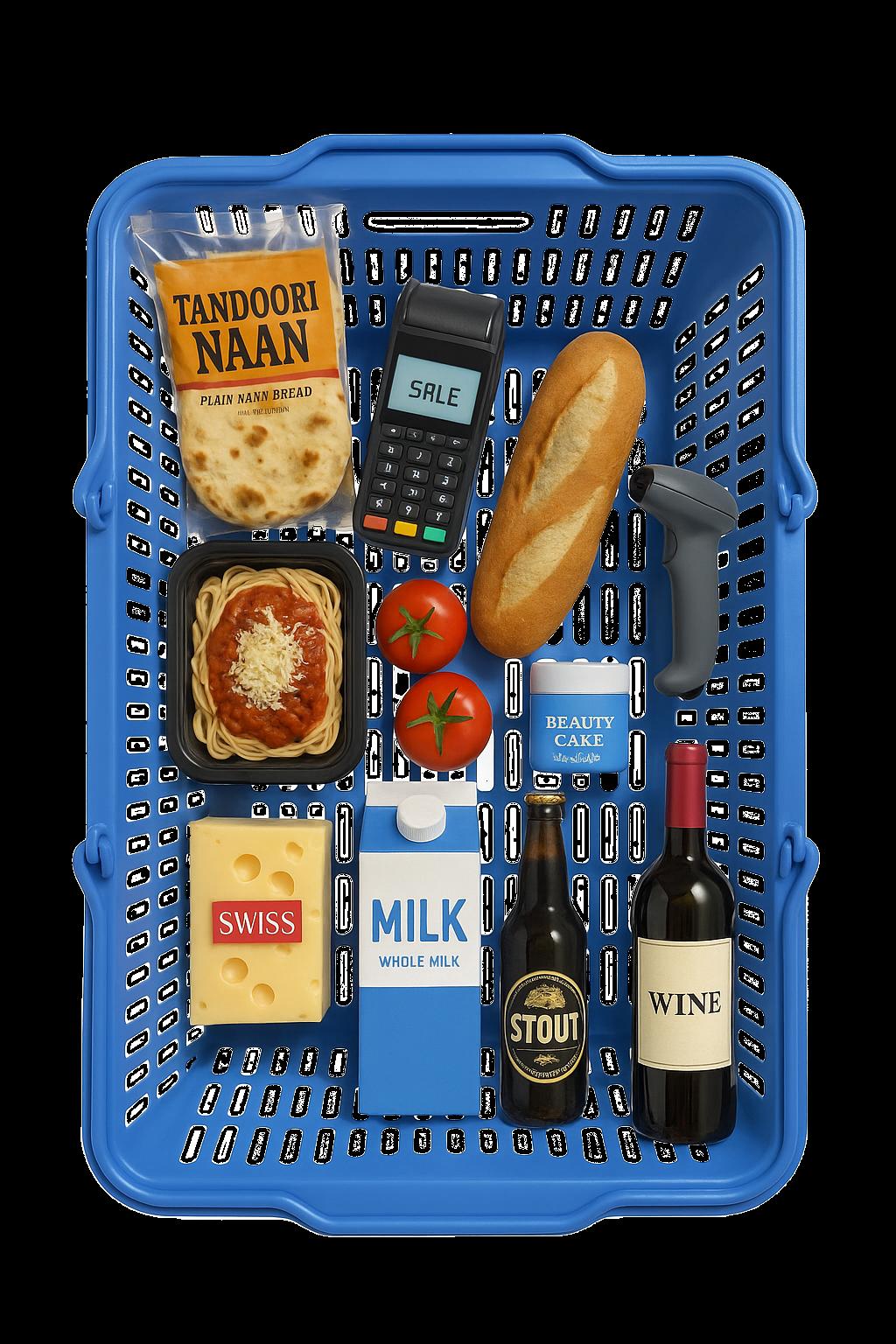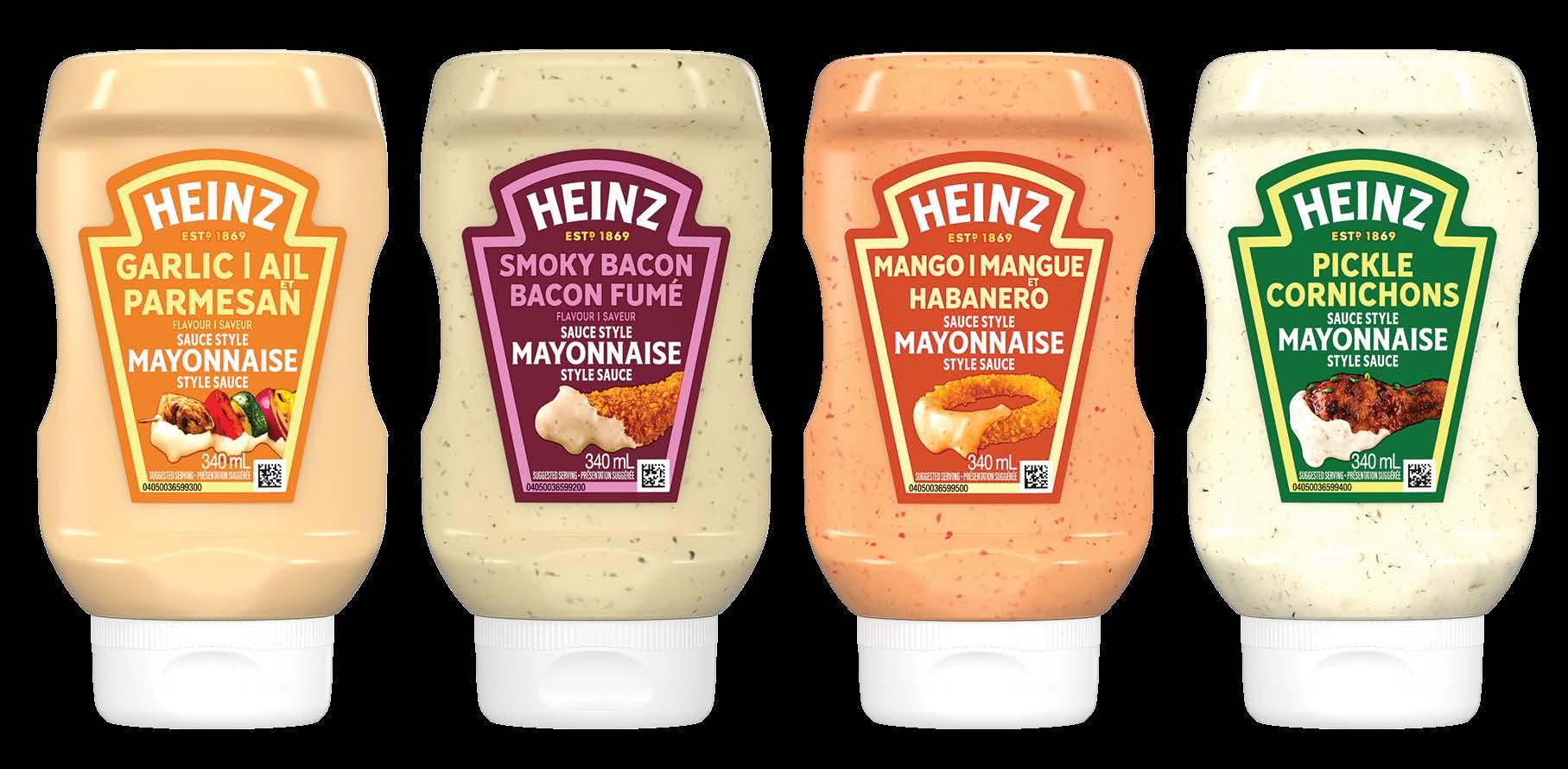DIGGING DEEPER INTO ORGANICS • CATCHING UP WITH GENERATION NEXT HOW TO BUILD A CLIMATE-RESILIENT OPERATION • THE SNACK FACTOR


DIGGING DEEPER INTO ORGANICS • CATCHING UP WITH GENERATION NEXT HOW TO BUILD A CLIMATE-RESILIENT OPERATION • THE SNACK FACTOR

Shining a spotlight on our new Impact Champions



Exhibition Place • Toronto, ON
Conference: September 19, 2025
Trade Show: September 20-21, 2025




















Skip the line! Get your badges mailed to you before the show
Free breakfast and lunch on Saturday & Sunday
Goodie bags at the breakfasts**
Save on Uber and Parking**, and more!
**While Supplies Last

Register by August 22 for all the perks & savings!


*CHFA membership is not required to register. Registration is free for retailers and CHFA members only. Online registration closes on August 29, 2025 for non-CHFA members. Onsite registration is available afterwards at the Enercare Centre at Exhibition Place in Toronto. Onsite registration fees apply for non-member health practitioners, brands and business services. Photo ID and proof of industry involvement are required. Visit chfanow.ca for the full attendee policy.































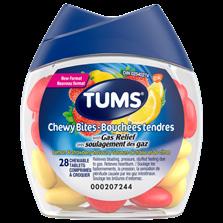

















7 Front Desk
8 The Buzz 69 New on Shelf PEOPLE
10 Spicing things up Kim Wiseman is bringing the flavour with her premium spice blends IDEAS
13 Hungry for healthy choices New PwC Canada survey highlights the habits of gen-Z shoppers
14 Where are they now? Catching up with previous Generation Next winners COLUMNS
16 How shoppers are buying Canadian Kantar’s Amar Singh says supporting local is more than a fad
17 The dynamics of back-to-school shopping
FRESH
61 Digging deeper into organics New consumer priorities are expanding the appeal of fresh organic foods
AISLES
63 Rising to the top The packaged bakery trends that can help drive sales
67 Small bites, big appeal What consumers are craving from their snack foods
EXPRESS LANE
70 Planting the seeds Grocers can make real impact on sustainability—advisor Wesley Gee explains how


Caddle research reveals what’s motivating parents during this pivotal retail season




Bonterra®, an innovative and sustainably focused line of household paper products, that gives Canadians the opportunity to start small at home to e ect big change in the world.
Made in Canada, Bonterra bath tissue, paper towels, and facial tissue products are revolutionizing the household paper category for the benefit of the environment, with responsibly sourced materials, plastic-free packaging, carbon-neutral manufacturing, and proud partnerships with 4ocean and veritree.
Together, we can choose a be er future for the planet and for future generations.


2300 Yonge Street, Suite 2900, Toronto, ON M4P 1E4 (877) 687-7321 Fax (888) 889-9522 www.canadiangrocer.com
BRAND MANAGEMENT
GROUP PUBLISHER/SVP, GROCERY & CONVENIENCE, CANADA Sandra Parente (416) 271-4706 - sparente@ensembleiq.com
PUBLISHER Vanessa Peters vpeters@ensembleiq.com
EDITORIAL
EDITOR-IN-CHIEF Shellee Fitzgerald sfitzgerald@ensembleiq.com
MANAGING EDITOR Kristin Laird klaird@ensembleiq.com
DIGITAL EDITOR Jillian Morgan jmorgan@ensembleiq.com
ADVERTISING SALES & BUSINESS
NATIONAL ACCOUNT MANAGER Karishma Rajani (on leave) (437) 225-1385 - krajani@ensembleiq.com
NATIONAL ACCOUNT MANAGER Julia Sokolova (647) 407-8236 - jsokolova@ensembleiq.com
NATIONAL ACCOUNT MANAGER Roberta Thomson (416) 843-5534 - rthomson@ensembleiq.com
ACCOUNT MANAGER Juan Chacon jchacon@ensembleiq.com
DESIGN/PRODUCTION/MARKETING
CREATIVE DIRECTOR Nancy Peterman npeterman@ensembleiq.com
ART DIRECTOR Jackie Shipley jshipley@ensembleiq.com
SENIOR PRODUCTION DIRECTOR Michael Kimpton mkimpton@ensembleiq.com
MARKETING MANAGER Jakob Wodnicki jwodnicki@ensembleiq.com
EDITORIAL ADVISORY BOARD
RAY HEPWORTH , METRO BRENDA KIRK , PATTISON FOOD GROUP
CHRISTY MCMULLEN , SUMMERHILL MARKET
GIANCARLO TRIMARCHI VINCE’S MARKET
SUBSCRIPTION SERVICES
Subscriptions: $102.00 per year, 2 year $163.20, Outside Canada $163.20 per year, 2 year $259.20 Single Copy $14.40, Groups $73.20, Outside Canada Single Copy $19.20.
Digital Subscriptions: $60.00 per year, 2 year $95.00
Category Captain: Single Copy $20.00, Outside Canada Single Copy $30.00
Fresh Report: Single Copy $20.00, Outside Canada Single Copy $30.00
Subscription Questions: contactus@canadiangrocer.com
Phone: 1-877-687-7321 between 9 a.m. to 5 p.m. EST weekdays Fax: 1-888-520-3608 Online: canadiangrocer.com/subscription-centre

CORPORATE OFFICERS
CHIEF EXECUTIVE OFFICER Jennifer Litterick
CHIEF FINANCIAL OFFICER Jane Volland
CHIEF OPERATING OFFICER Derek Estey
CHIEF PEOPLE OFFICER Ann Jadown
Canadian Grocer receives unsolicited materials (including letters to the editor, press releases, promotional items and images) from time to time. Canadian Grocer, its affiliates and assignees may use, reproduce, publish, republish, distribute, store and archive such submissions in whole or in part in any form or medium whatsoever, without compensation of any sort. ISSN# 0008-3704 PM 42940023 Canadian Grocer is Published by Stagnito Partners Canada Inc., 2300 Yonge Street, Suite 2900, Toronto, ON M4P 1E4. Printed in Canada
If there was ever a time the world needed a helping hand, surely it’s now.
From global conflict and the intensifying impacts of climate change to resource scarcity, the rising cost of living, food insecurity and a deepening mental health crisis, the challenges we face are complex and far-reaching. It’s easy to feel overwhelmed—but it’s important to remember that each challenge is also an opportunity to take action and make a difference.
In this issue, we’re turning the spotlight on people and organizations in the Canadian grocery industry that are doing just that. Bit by bit, they’re tackling some of today’s toughest problems and working to create lasting, positive change within their companies, their communities and beyond. We’re proud to showcase the good work being done by our 2025 Impact Award winners. Turn to page 26 to read about their inspiring efforts that run the gamut from regenerative agriculture projects to food rescue and waste diversion programs as well as efforts to create dementia-friendly communities— and so much more.
Recognizing that impact often begins with passionate individuals, we’re also excited to introduce our new Impact Champion Award. This year, six exceptional leaders from across grocery retail are being recognized for stepping up to drive positive change on a number of fronts—environmental, DE&I, mental health and helping underprivileged youth—see their stories on page 38.



This issue also digs deeper into sustainability. In our feature “Climate Control,” writer Rebecca Harris looks at how grocers are adapting to more frequent extreme weather events and why building climate-resilient operations is more urgent than ever (read the story on page 21) . And in Express Lane (page 70) we talk to Wesley Gee, chief sustainability officer at Works Design, a Toronto-based advisory firm. Gee shares insights on how grocers can move beyond box-ticking to define meaningful sustainability goals.
See you next time!
Shellee Fitzgerald Editor-in-Chief sfitzgerald@ensembleiq.com



Continuing its growth across Ontario, Empire’s FARM BOY banner announced it is opening three new stores: two in Ottawa and one in Collingwood—a resort town on the southern shore of Georgian Bay.
T&T SUPERMARKET will open its largest California location in the Greater Los Angeles area in fall 2026. At 60,000 square feet, the store will offer a self-serve hot food bar, street food, freshly baked foods and viral Asian beauty products. The store will be T&T’s fourth in the state, with three others planned for Irvine, San Jose and San Francisco.
In Port Moody, B.C., Pattison Food Group plans to open a small-format SAVE-ONFOODS. The 13,000-sq.-ft. store will open in a space previously occupied by Meiga Supermarket, which shuttered in early August. It will feature a full selection of fresh produce, meat, dairy and grocery essentials alongside local favourites and exclusive private-label items. The store is slated to open mid-September.

LOBLAW recently opened four discount stores across three provinces: Edward’s No Frills in British Columbia, two Maxi stores in Quebec and a Correy & Rita’s No Frills in Ontario.
As FOOD BASICS celebrates its 30th anniversary, the Metro-owned discount banner opened its 148th Ontario location in Ingersoll in June. This is the third Food Basics store to open in the province in 2025, with another four stores scheduled to open by the end of the year.
Think Retail, a bespoke brokerage firm based in Montreal, has announced convenience store chain KALEMART24 will grow its footprint by 20 stores in its home
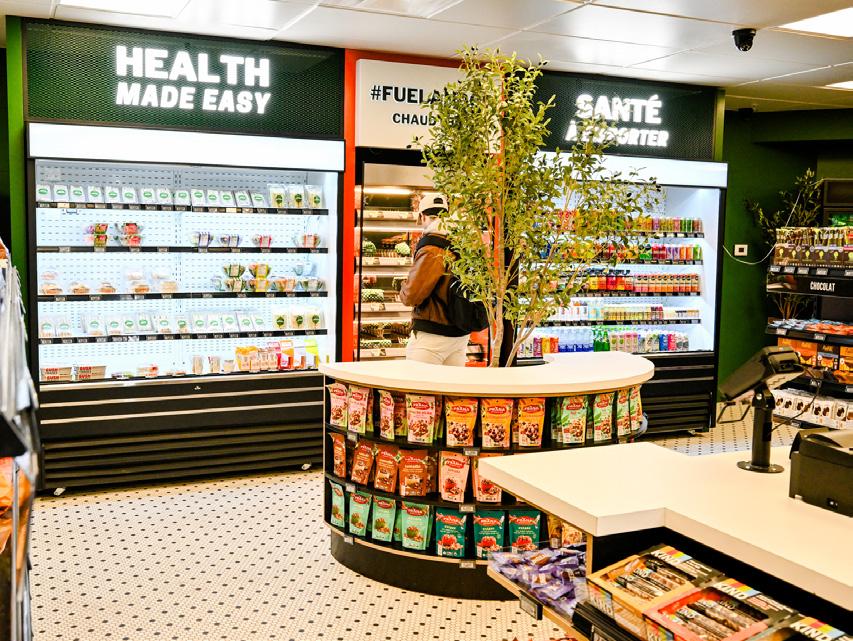
province of Quebec and will expand into Ontario over the next 12 months. Kalemart24 is seeking sites that range from 500 to 1,500 square feet.
Guelph, Ont. is getting its first HEALTHY PLANET. Opening in August at 103 Clair Road East, the new, 6,000-sq.-ft. store will offer an extensive selection of organic and natural groceries, vitamins and supplements, sports nutrition, natural beauty and skincare, as well as baby and pet wellness products.




Associated Grocers, a Pattison Food Group (PFG)-owned grocery wholesaler, has promoted Brody Powell to vice-president. Powell has spent more than 20 years with PFG, beginning his career at Buy-Low Foods. He joined Associated Grocers in 2011 as retail marketing manager, and most recently served as general manager of independent wholesale.
Nature Fresh Farms has appointed Josianne Légaré to the position of senior vice-president, North American sales and strategic growth.
Légaré, a 2018 Star Women in Grocery winner, brings more than two decades of commercial leadership experience to her new role at the Leamington, Ont.-based greenhouse.
Andrew Peller has appointed Renee Cauchi as its new chief financial officer. Cauchi, who was named vice-president of finance and interim chief financial officer in September 2024, has been with the Ontario-based wine and craft spirits producer since 2015. Prior to joining Andrew Peller, she was at PricewaterhouseCoopers.
Nature’s Path Organic Foods has named Laura Chamberlain as its first chief customer officer. She will lead U.S. customer strategy, focusing on household penetration, retail growth and business expansion. Chamberlain was previously chief customer officer at Nature’s Way and has held leadership roles at Danone, Hershey, Clorox and other major CPG companies.
Steve Anderson has joined Kenvue as senior director, drug and grocery sales. Anderson spent the last seven years with Post Consumer Brands, most recently serving as vice-president of sales, Canada and international. Prior to that, Anderson was the senior director of revenue management and shopper insights at Mondelēz International.



The Food Industry Association of Canada has announced the recipients of the 2025 Golden Pencil Awards: Michael Medline, president and CEO of Empire Companies Ltd. and Sobeys Inc., Shaun McKenna, executive director of The Grocery Foundation and Gary Wade, president of Unilever Canada and CEO of Beauty & Wellbeing North America. All three executives will be celebrated during the Golden Pencil Awards ceremony following Canadian Grocer’s GroceryConnex conference, taking place in Toronto this November.













We want to hear about the grocery industry’s rising stars! If you know someone working in grocery (retailer, distributor or supplier) under the age of 40 who is innovative, excels at what they do and is showing a commitment to the grocery industry, nominate them for the 2025 Generation Next Awards. If you’re that awesome, you can nominate yourself, too! Winners will be featured at our GroceryConnex event in November and in Canadian Grocer’s December/ January issue. Nominations close Sept. 12.
DCI, in association with the Canadian Independent Grocery Buyers Alliance, handed out the 2025 Star Awards. In all, six awards were presented as part of the organization’s annual Business Summit in June. This year’s winners are Commisso’s Fresh Foods (Retailer of the Year), CJR Wholesale Grocers (Partner of the Year), Mike Dean Local Grocer (Social Responsibility Award), Rabba Fine Foods (Innovation Award) and Anthony Iaizzo of CJR Wholesale (Leader of the Year). And the Lifetime Achievement Award was presented posthumously to Mike Williamson of Central Fresh Market in Kitchener, Ont.


Montreal entrepreneur
Kim Wiseman is bringing the flavour with her premium spice blends
By Andrea Yu
Photography by Chantale Lecours
KIm wIseman’s connectIon to spices started early. “My parents spent years in India, so I grew up in a house with tons of spices,” she explains. Her love of spices carried into adulthood, when she began experimenting with her own blends while cooking.
After going on maternity leave from her role as head of customer engagement at DavidsTea in 2015—and welcoming a second child in 2017—she found herself in need of simpler, more efficient ways to prepare meals. She went looking for mealtime shortcuts, but found the pre-made spice blends sold in grocery stores lacked flavour and had unwanted ingredients. “I couldn’t find really fresh, flavourful ingredients, or I found a lot of fillers I didn’t necessarily want to give to my kids,” Wiseman explains. “I saw a real gap in the market for high-end, premium, clean spice blends.”
Montreal-based Wiseman was inspired to start her own spice blend business, which she named Kanel, meaning “cinnamon” in many Scandinavian languages. She spent a year developing a business plan that involved company-owned retail stores selling directly to consumers—much like the DavidsTea model.
Branding was also important, with packaging featuring an elegant, minimal design. “I knew I didn’t have a big budget for marketing or advertising, so it would have to be a product that people wanted to display on their counters and social media platforms,” Wiseman says. The packaging was eco-friendly— cardboard tubes, compostable bags and recyclable tins.
The blends themselves would be fresh and innovative, using premium ingredients. Wiseman worked on recipe development to come up with 24 products, including spice blends and a salt line, one using Italian black truffle, which is still one of Kanel’s most popular products. “It was a lot of trial and error,” she explains of recipe development. “We always try to push the envelope and bring unique products to the market.” For example, Kanel’s take on everything bagel spice, Montreal Bagel Spice, has flax seeds, nigella
and less salt than its competitors. Then, the entire blend is toasted to add more depth of flavour and crunch.
By 2018, Wiseman had opened the first Kanel brick-and-mortar location at CF Carrefour Laval, followed by four more stores in Quebec and Ontario. Sadly, plans to expand across Canada were halted by COVID. “Malls shuttered and everything stopped,” she says. “It was close to 50 employees that I had to lay off overnight. That was really heartbreaking.” Wiseman knew she’d have to pivot her business model quickly to survive, so she approached grocery stores about stocking her products.
Her first target was Avril Supermarché Santé, a high-end Quebec grocer with a dozen-odd stores. “I relentlessly contacted them with emails and phone calls, and I just kept following up,” Wiseman says. “I knew I needed to get in there.” Kanel finally landed on Avril shelves in the fall of 2020, which led to a buyer from Loblaw contacting Wiseman to pilot Kanel products in one of its Quebec locations in 2021. The brand performed well, opening the door for Kanel to be stocked in 300 Loblaw locations across Ontario, Quebec and Atlantic Canada. “It was huge,” Wiseman says of the milestone. “It was a really big moment for the brand and really put us on the map.”
Next came Sobeys, which began stocking Kanel in May 2025. The grocer sells Kanel’s spice blends, salts and its cocktail rimmers, which Wiseman launched in 2023. She was inspired to develop the product line after noticing customers posting photos on social media using Kanel spice blends to rim cocktails. “It was another surprising performer,” Wiseman explains. “People went crazy for it.”
Wiseman plans to continue expanding the Kanel product line, which may include single-use, lower-commitment formats in 2026. However, business challenges continue, with the uncertainty of the U.S. tariffs being the latest hurdle. In spite of that, Wiseman has no regrets about starting her own business. “It’s been a wild journey,” she says. “But when I meet people who tell me they use my spices every day in their kitchen, it’s really gratifying.” CG
30 seconds with … KIM
What do you like best about your job?
I love product development, particularly working on new blends that are surprising and delicious. Seeing it go from idea generation to being in grocery stores across Canada and being posted on people’s social media is pretty magical.
If you weren’t in the food business, what would you be doing?
I would definitely be running another business. Every week, I think, wouldn’t this be a good idea for a business? I have an entrepreneurial spirit and I love solving problems. I’m interested in lots of industries, so long as it’s a consumer goods business.
What’s the best career advice you’ve ever received?
I have two. The first one is: Don’t wait until you’re “ready.” No one is ever one hundred per cent ready, so don’t use that as an excuse. Just start! The second is: Never hold back from sharing your passion. Enthusiasm is contagious, and it goes a long way in building a brand. Your team and your customers will pick up on it and start spreading your message for you.
What’s your favourite product from your lineup?
I tend to favour the newest blends once we launch something. Right now, I’ve been using our Organic Green Goddess a lot. It’s a savoury blend of garlic, onions, spinach and parsley. It’s a really bright and herbaceous blend. We just used it with chicken on the barbecue, and I also love it on roasted veg or as a dip for the kids.
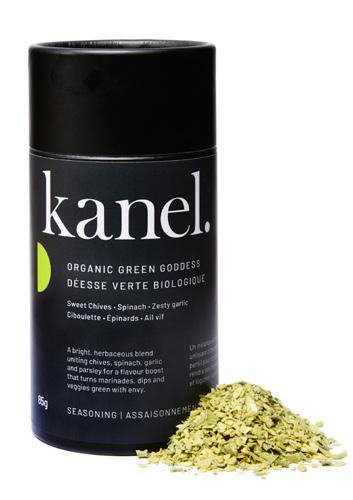
Congratulations to all


CONSUMER HABITS

Gen-Z consumers In Canada are pushing for healthier food choices, which will have greater implications for grocers in the years to come.
That’s one of the findings of PwC Canada’s Voice of the Consumer Report 2025, which analyzed survey results from more than 21,000 consumers across 28 countries, including 1,020 Canadian consumers.
It found 20% of gen-Z Canadians follow vegetarian or vegan diets compared to 12% of the overall population, 22% of generation Z eat more alternative meats compared with 13% of Canadians overall, and nearly 48% of gen-Z Canadians are cutting back on alcohol versus 43% of the overall population.
As generation Z “become the heads of families, they’re going to become one of the most important segments of clients the grocery chains and the food industry will deal with,” explains Sebastien Doyon, partner and Canadian strategic operations
leader at PwC Canada.
Doyon notes that generation Z is more concerned than previous generations with, “How do I feed myself? How do I maintain or improve my health?”
In response, grocers will need to provide better product information including traceability, improved ingredient and nutritional value information, details on where and how food is grown, how it’s been handled, greater in-store signage and richer content online, he says.
Doyon cautions that as gen-Z consumers start to build families, they’ll still be looking for healthier options, but will have limited budgets and will seek cost savings. “If I’m a retailer, I need to be careful I’m not expanding my assortment too much, that I’m not adding costs to my business that, in turn, is transferred to consumers.”
As trade tensions with the United States continue, the survey found lower prices override “buy local” sentiments: While 75% of Canadians say they’re willing to pay a premium for locally produced food, 62% say they will still choose a lower price imported product over a more expensive domestic equivalent.
“Despite everybody saying they want to buy more local foods, they’re not ready to do it that much at a higher price,” Doyon says. “A sliver of the population is going to be ready to pay a premium, a large portion won’t.”
The survey also found 6% of Canadian respondents are taking GLP-1 weight-loss drugs. Among those respondents, 76% say they’re making healthier food choices and 50% say they’re spending less on food. Of those not taking the drugs, 38% say they’re open to taking them in the future, which can have major effects on the food industry.
These drugs have “a ripple effect” on what people eat and how much they consume, Doyon says. —Danny Kucharsky
Canadian Grocer’s Generation Next Awards celebrate emerging leaders (under 40) who are shaping Canada’s grocery industry. Ahead of this year’s nomination deadline (Sept. 12), we checked in with a few past winners to find out how their careers have been progressing. By Kristin Laird
2022 WINNER
JOB THEN: Director of Sales Strategy for Yogurt & Cultured, Lactalis Canada
JOB NOW: Senior Director, Sales Strategy for Yogurt & Cultured

How has your career evolved since winning the Generation Next Award? I was promoted to a senior director (from director), and have been invited to several events to participate in either a panel discussion or speak about my career and opportunities within the dairy industry.
How do you measure success today versus when you won the award? I haven’t changed how I measure success; I’ve always believed it’s more than hitting KPIs—I want to ensure people on my team or in my organization are engaged, enjoying our collaboration and, ultimately, proud of the work they’re doing while having lots of fun.
How do you stay motivated and inspired?
My manager, Adrienne, who I consider a close friend, provides an incredible amount of support and opportunities to stay engaged, and she inspires me every single day. People who surround me each day, like my team, seem to be happy coming in and stretching themselves, even when there is a crisis. That keeps me motivated professionally. Personally, to keep a constant high level of energy and engagement, I have to take my breaks, enjoy my hobbies and spend time with my loved ones. I’m grateful for where I am in my life and wouldn’t trade it for anything else!
2020 WINNER
JOB THEN: Customer Development Manager, Tree of Life Canada
JOB NOW: Team Lead –Pattison Food Group & E-commerce

How has your career evolved since winning the Generation Next Award? I evolved to a leadership role working with an amazing team focused on growing Tree of Life’s presence in the West and online. I also had the great honour to be recognized as a Star Woman in Grocery (in 2023). I need to say that both awards did not change who I am, but they changed how I see myself—a capable, resilient and strong woman that can do anything I put my mind to, and for that I am extremely grateful!
How do you measure success today versus when you won the award? I used to measure success with the regular individual KPIs we are subject to in our industry. Today, success for me is measured by the individual and group achievements of the team I am lucky to work with, the satisfaction of learning new ways of addressing old and new challenges and, finally, being appreciated for being myself.
What career advice would you give your younger self? Don’t be afraid of taking risks, facing new challenges and failure. Even when you think you failed, you have succeeded in building a new and better version of yourself for what’s next!
2020 WINNER
JOB THEN: Vice-president, Communications and Corporate Affairs, Empire
JOB NOW: VP, HR Operations – Retail

How has your career evolved since winning the Generation Next Award? I spent a few more years in the VP, communications and corporate affairs role at Empire, serving as a member of the company’s executive committee. I had some great discussions with leadership at the time about how I wanted to grow and continue contributing to Empire’s long-term growth and success. We narrowed it down to two goals: first, to get closer to the operation; second, to contribute to our culture and in-store teams. This role–while a shift to a different practice area–ticked both boxes. I knew this career change would be a humbling learning journey. Ultimately, I learn more and more every single day, and I don’t think that will ever stop–which is highly engaging!
How do you measure success today versus when you won the award? I measure success by our ability to provide an inclusive, safe, high-performance workplace. I believe in the rich opportunities for career development that we provide. When I see people grow, I know we are well along on our journey to become the best retailer in Canada. CG
The responses have been edited for clarity and length.

you know a rising star in













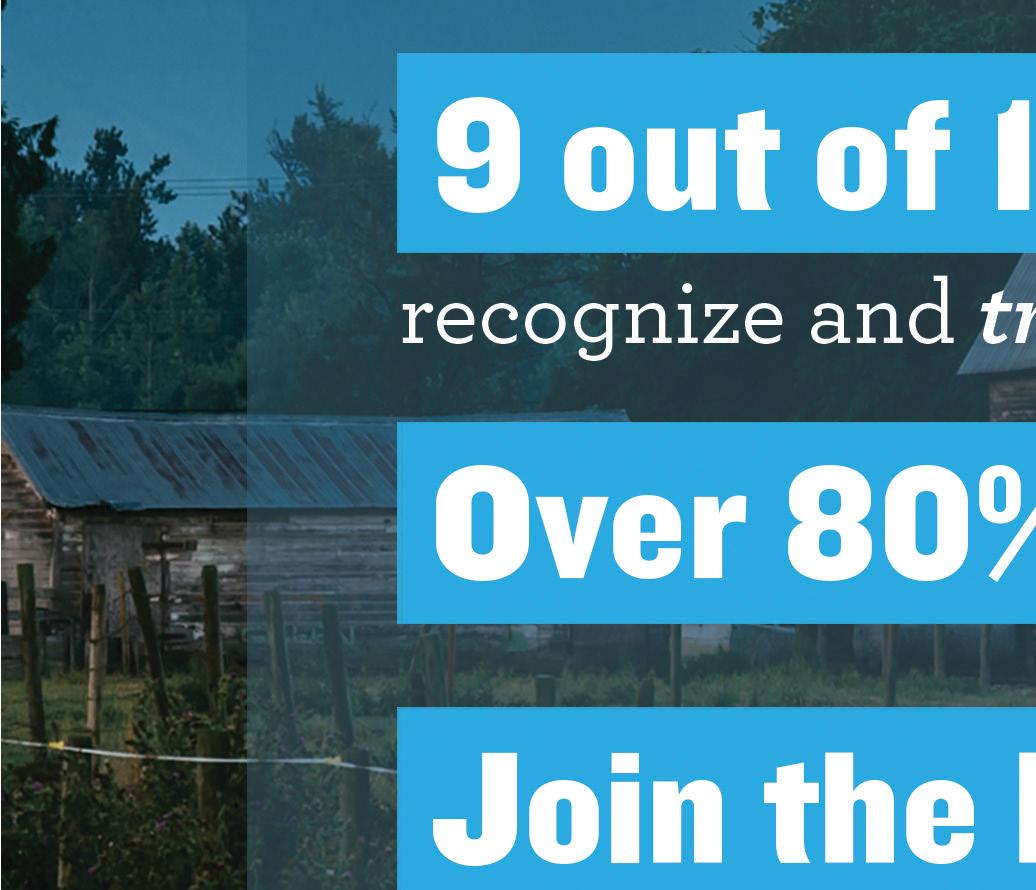











More than a trend, buying local reflects shoppers’ values—and offers retailers the opportunity to connect
Even if tariffs were lifted, 73% of shoppers say they would continue to prefer Canadian brands
CANADIAN SHOPPERS ARE making a powerful statement with their purchasing choices: buying local is more than a trend—it’s a reflection of national values. According to Kantar’s Canadian ShopperScape study, 83% of shoppers say they prioritize Canadian brands or products made in Canada. This sentiment is especially strong among boomers and Quebecers, who are leading the charge in supporting domestic goods.
The motivations behind this shift are deeply rooted in patriotism and economic solidarity. Shoppers claim supporting Canadian workers and brands, protesting U.S. tariffs and preferring the quality of local goods as top reasons for their choices. Boomers exhibit the strongest sense of national pride, with 91% agreeing that buying Canadian supports local jobs and the economy.
However, younger generations—especially generation Z—face challenges in identifying which products are truly Canadian. While boomers rely heavily on product labels and store signage, younger millennials are increasingly turning to social media and digital tools to guide their purchase decisions. This generational divide presents a unique opportunity for brands to bridge the knowledge gap through clearer packaging, influencer partnerships and digital education.
When looking at what Canadians are buying, the ShopperScape data shows that perishables dominate. Dairy, fresh produce and meats are the top categories where shoppers actively seek local options. Generation X shows a strong preference for Canadian meats and sweet snacks, while Quebecers lean heavily into local dairy and produce. Looking ahead, shoppers across all demographics plan to increase

their purchases of Canadian perishables.
The commitment to buying Canadian products extends beyond temporary economic conditions. Even if tariffs were lifted, 73% of shoppers say they would continue to prefer Canadian brands. This enduring loyalty is driven by a sense of cultural alignment, trust in quality and a desire to support the national economy.
For brands and retailers, the opportunities are clear. Emphasizing local sourcing, especially in perishables, can deepen shopper engagement. Seasonal promotions, storytelling around Canadian agriculture and limited-edition regional packs can reinforce brand loyalty. Messaging that highlights how products contribute to Canadian jobs and communities can tap into the emotional drivers behind these purchasing decisions.
To reach younger shoppers, brands must invest in digital strategies that make Canadian identity unmistakable. This includes using QR codes, social media campaigns and influencer content to educate and inspire. Meanwhile, regional tailoring—such as sustainability messaging in Quebec or premium positioning in Ontario—can further enhance relevance.
In a retail landscape shaped by global uncertainty, Canadian shoppers are finding certainty in local food choices. For brands that align with these values, the opportunity to build lasting loyalty has never been greater. CG
Amar Singh is a senior director at Kantar Retail. He creates insights that inform strategic decisions about key drug, home improvement, discount, convenience, grocery and digital channels. Amar is a seasoned brand, shopper and advertising researcher.

Parents of younger children tend to be more organized, while those shopping for high schoolers are more likely to ‘grab-and-go’
c addle’s latest research , conducted in May 2025, reveals how parents are planning (and feeling) about the high-stakes, back-to-school retail moment. It’s one of the most critical retail seasons of the year, and one of the most emotionally charged. As millions of Canadian students prepare to return to classrooms this fall, their parents are navigating a complex shopping landscape shaped by inflation, evolving brand loyalties and rising expectations around value and experience.
To better understand how parents are approaching the 2025 season, Caddle surveyed more than 1,200 parents of K-12 students in Canada. What emerged was a story of early planning, persistent deal-hunting and an increasingly emotional and strategic approach to back-to-school shopping.
Two-thirds of parents say they begin thinking about their back-to-school purchases in late spring or early summer. But, despite getting a jump on planning, only 19% expect to get everything they need in a single trip. The vast majority anticipate two or three rounds of shopping, thanks to shifting supply lists, fluctuating budgets and frequent out of stocks.
Planning varies by age group: parents of younger children tend to be more organized, while those shopping for high schoolers are more likely to “grab-and-go.” And while digital tools such as Flipp, store websites and search engines help guide decision-making, nearly every parent surveyed (99%) still expects to do their shopping in-store.
Price remains the top priority: 89% of respondents say they always or often look for promotions; only 1% shop without checking for deals first. Mass merchandisers such as Walmart continue to lead the
pack for its mix of pricing and convenience. But price alone isn’t enough to win loyalty. If a key item is out of stock, 38% of parents say they’ll switch retailers rather than wait or skip the item. For retailers, that means promotions need to be visible, reliable and backed by strong on-shelf execution.
Emotions also play a significant role in how families navigate the back-to-school season. Parents shopping for younger children are more likely to describe themselves as excited and prepared. Parents of older kids, especially high schoolers, report more stress and indifference, which often leads to more impulsive purchases.
These emotional states directly influence how shoppers make decisions. Stressed or overwhelmed parents are more likely to rely on ratings and reviews when choosing between products, and four in five parents say a review has changed their mind about a product, sometimes even prompting them to walk away altogether. In these moments, clear, credible product information can be the difference between a conversion and a missed sale.
Private-label products remain a strong choice for many families, especially those with younger children. Nearly 70% of kindergarten parents say they prefer store brands, primarily because of affordability. However, as children age, so do their brand preferences. By high school, national brands play a larger role, especially when backed by quality, familiarity, and yes, promotions. That said, loyalty is flexible. Many parents remain open to switching brands if the value proposition is strong enough. School supplies, snacks and hygiene products tend to be the most common private-label categories, while clothing, backpacks and tech see more name-brand loyalty.
Even as online shopping continues to grow, the in-store experience dominates. Parents, overwhelmingly, expect to buy essentials such as supplies, food and personal care products in person. But that doesn’t mean digital influence ends at the door. Most parents are doing research online ahead of time, and many are checking reviews on their phones while standing in the aisle. Seventy-eight per cent look up reviews online, and 71% do so while in-store—underscoring the importance of an omnichannel strategy.
Back-to-school shopping is emotional, multi-step and driven by value. For retailers, the opportunity is clear. This $4 billion-plus market, driven by more than 5.8 million Canadian students, rewards those who understand the complexity of the shopper journey. Retailers with meaningful promotions, clear product information, flexible stock management and in-store experiences that match online expectations will win carts and earn long-term loyalty. CG

How did you get your start in the business? I’m from Italy and during my time at the University of Trieste, where I was studying economics, I was part of a program that allowed me to spend one year in a school abroad. I chose Germany and while studying there, I had an opportunity to intern and then work for a management consulting company in Munich. I was then contacted by a headhunter to join Ferrero, where I’ve stayed for the last 25 years. In those early years at both companies, I learned the importance of organization, discipline and reliability.
A big benefit at Ferrero is that every three or four years, there is an opportunity to change functions, brands or geography. I started in Frankfurt, then moved to Luxembourg. Before coming to Canada, I was the global president of marketing for Kinder Food. I think it’s important to stay curious. Curiosity is the driver that motivated me to leave all the comforts of Luxembourg and start a new life in Canada.
“FOR ME, GROWTH IS NOT JUST ABOUT PROFIT AND MARKET SHARE, BUT ABOUT PEOPLE AND PROCESSES. I WANT TO LOOK BACK AND SEE THAT PEOPLE GREW PROFESSIONALLY BECAUSE OF OUR COLLABORATION AND THAT WE LEARNED TO WORK IN A BETTER WAY” – OMAR ZAUSA
By Rosalind Stefanac • Photography by Jaime Hogge
What is your leadership philosophy?
In this business, there is only one constant and that is change. The Japanese call this kaizen (which translates to “change for the better”), and when I achieve something I am already thinking about the next goal. There are many things happening around us that are out of our control, so it’s about how we react to these events.
I am also very transparent, so, in every moment, my leadership team knows exactly where they stand. Having an open dialogue means we acknowledge and celebrate successes, but also have critical discussions sometimes. I’ve gone from just sharing information about projects to sharing the why. If I invest enough time at the beginning of a project in sharing the purpose of why we should go in a particular direction, everything is easier later.
Why was Canada appealing, and how has working in different countries shaped your professional development? Having come from the global head office, I was looking for an experience where I had more visibility along the value chain and could get closer to the retailer and consumer. Moving to a new country, especially with my whole family, also meant restarting from zero, which is appealing to me. All your securities and routines are gone, so you’re [exposed] in a sense. You need to gain the trust and respect of new colleagues and deliver results to gain their commitment in dealing with future challenges. I’m listening and learning a lot, while being exposed to new perspectives where I can start to determine where the best options and opportunities are.
As for working in different countries, every culture has interesting aspects. In project management, German discipline is good; for unexpected events, the improvisation of Italians is fantastic. I love the welcoming nature of Canadians and your ability to integrate so many cultures here. It’s about getting the best of all the experiences I’m exposed to, and everyone has valuable insights to offer.
What is the hardest leadership lesson you’ve learned along the way? To stay humble and never lose sight of my strengths and weaknesses. Sometimes, when you reach success and get results and get that promotion, your ego gets in the way; you must remember to keep your feet on the ground. At the same time, when the results are not coming, don’t get super frustrated or depressed. It’s about moderation and that’s something I still have to tell myself.
What about your biggest challenges to date? The unpredictability of the business —every day there is something new to deal with. Whether it’s the pandemic, hyperinflation, the price of cocoa or the latest tariffs, these unpredictable events are becoming the norm. It’s our role to make the best out of it all; maintaining an attitude of glass half full is easy to say, but not easy to do every day. If we are able to keep a positive, optimistic attitude though, we will adapt much faster.
How do you balance business growth with sustainable practices? Understanding the expectations of your customer is the definition of success. The consumer today is more informed and interested
in not only what we produce but how we do it. So, our obligation is to operate in a sustainable way. Sometimes, we make decisions that may not present a return on investment right away, but we know in the long run, the consumer will honour these choices. One of our internal mottoes is: work, create, donate. Transparency is very important, too, which means admitting there are things we still need to work on. The ideal company, always doing everything right, is an illusion. Transparency is the prerequisite for building trust and a valuable relationship with your customers.
How do you get the best from your team members? I need to listen to and understand not just the professional, but also the person. I need to know where they’ve put up their own barriers due to bias or lack of confidence. Very often we put the biggest limits on ourselves. It’s my role to understand what drives my team members so I can help them realize their potential. I also adapt to different work styles. Some people thrive in pressure situations and others don’t. I need to modify my message based on who I’m working with. I’m also a strong believer in feedback, which I consider a precious gift. While some feedback I’ve received over the years has been difficult, I’m also grateful that it opened my eyes to what I could be doing better.
How do you continue to learn and develop as a leader? I love to read and look to others for inspiration. There are examples like Italian-Canadian businessman Sergio Marchionne who led Fiat, and other great leaders. When you read about their lives, you see what’s possible. I also learn from the coaches who train my kids with their sport teams, or the shop managers and those supporting the production line. I can learn from all of them. I was also lucky to meet great leaders throughout my career at Ferrero who were really inspirational, although sometimes challenging. I am grateful because they opened new doors for me where I discovered my true capabilities.
What do you hope to accomplish in your current role? For me, growth is not just about profit and market share, but about people and processes. I want to look back and see that people grew professionally because of our collaboration and that we learned to work in a better way. We have the privilege to be in a position to
question what was done yesterday and [look at] what we can do to make it better.
What advice would you give to up-andcoming leaders? The same one I’m sharing with my kids right now, which is to be resilient. At Ferrero, I encourage people not to run the 100 metre-race, but to prepare for the marathon. Make decisions that are long-term oriented because they’re going to be sustainable. Don’t look for short cuts, they won’t pay back in the long run. It’s also important to be adaptable. To embrace change means having the capability to integrate and make the best of situations. Those who resist change—which is happening all around us no matter what—will suffer. We have to get comfortable in being uncomfortable and when we understand this disruption is the norm, I think we can adapt much faster and more easily. CG
This interview has been edited for length and clarity.
1 YOUR FIRST JOB? Selling my father’s old comic books to be able to buy a soccer ball.
2 IF YOU WEREN’T HEADING FERRERO CANADA YOU’D BE … An entrepreneur running a consulting company with an objective to help people thrive.
3 HOW MANY LANGUAGES DO YOU SPEAK? Italian, German, English, French and Spanish.
4
PEOPLE WOULD BE SURPRISED TO KNOW … I swam for Italy’s national team when I was 16 years old.



By Rebecca Harris

Grocers have been going green for years— shrinking their carbon footprints, reducing waste and investing in renewable energy. But now, the heat is on retailers to do even more: mitigate the impacts that climate change itself poses to their business.
According to the World Meteorological Organization (WMO), this year’s average global temperature is expected to surpass 2024’s record-breaking heat of 1.55 C above pre-industrial levels. Over the next five years, temperatures are expected to continue at, or near, record levels. In its latest report, WMO notes the current level of warming is driving more harmful heat waves, extreme rainfall events, intense droughts, rising sea levels and more.
“We’re seeing nothing but increased temperatures
and more severe and frequent storms,” says Joe Solly, a partner with Deloitte’s risk advisory practice and leader of the firm’s sustainability and climate change practice in Ontario. “So, we’re on a very unattractive trajectory and the impacts we’re seeing are more tangible and more real, whether that’s droughts in California, flooding in B.C. or wildfires in Alberta. These are having disruptive impacts on supply chains, shipments and deliveries. It’s in front of us now versus something that’s far out in the future.”
With climate change impacts hitting close to home, grocery retailers are under growing pressure to adapt. Here’s a look at the key challenges they’re tackling—and how they can work to climate-proof their businesses.





















































































































Keeping the doors open during extreme weather events
When faced with an extreme weather event, grocers must ensure their stores remain operational—both for their community and the bottom line. “Every minute I don’t have the store open, every minute I don’t have my registers operating, every minute I’m not transacting with shoppers is a significant cost,” says David Marcotte, senior vice-president at Kantar.
Aldi USA, which has more than 2,500 stores across the United States, prioritizes climate-resilient design solutions when planning and constructing new stores, as well as when renovating existing locations.
“We have a responsibility to keep our doors open in order to provide high-quality, affordable groceries to our communities, especially when they need us most,” says Amber Hardy, director of systems and sustainability at Aldi USA. For example, several Aldi stores are equipped with impact-resistant glass to better withstand high winds and flying debris in storm-prone regions.
“In high-risk areas, we incorporate site-specific resilience strategies, such as elevating structures in flood zones and reinforcing roofing systems,” Hardy says. “We power 215 stores and 16 distribution centres with solar or wind energy, which helps minimize demand on the grid during extreme weather, including heat waves and cold spells, while also helping us reduce our emissions. Looking ahead, we plan to add solar energy systems to 70 to 90 additional stores each year.”
At Pattison Food Group (PFG), climate risk is increasingly a consideration in its site selection and facility design. For example, the company assesses risks such as floodplain exposure and extreme temperatures when selecting sites or planning infrastructure upgrades. “Where feasible, we are incorporating energy-efficient systems, backup power solutions and resilient building materials to enhance reliability and reduce operating emissions,” the company said in an email to Canadian Grocer.
On the transportation front, PFG ensures continuity during extreme weather events through an emergency logistics response protocol. Its solutions have included using e-commerce delivery vans to access areas where large transport trucks can’t operate, rerouting shipments through alternative transportation corridors and temporarily fulfilling orders from different warehouse locations. “In critical situations, we have also airlifted essential goods—such as pharmaceuticals and baby formula—to remote communities that have been cut off,” said PFG.
Climate-related disruptions don’t just threaten physical stores—they also impact food at the source.
As the U.S. Environmental Protection Agency notes, climate change can make conditions better or worse for growing crops in different regions. For example,
while a longer growing season could allow farmers to diversify crops, it could also limit the types of crops grown or increase demand for irrigation. Other risks include heavy precipitation that can harm crops by eroding soil and depleting soil nutrients, and droughts, with effects ranging from slowed plant growth to severe crop loss.
The current global cocoa shortage, for example, is said to be exacerbated by drought and other climaterelated issues. Meanwhile, droughts in Brazil and Vietnam—the world’s two largest coffee producers— are impacting global coffee supply and pricing.
As grocers know well, adapting sourcing strategies is essential to address this latest challenge. “COVID triggered a massive conversation about supply chain resilience and security,” says Sarah Burch, executive director of the Waterloo Climate Institute at the University of Waterloo. “On the heels of that, there’s been increasing awareness about how climate change plays into it as well.”
For PFG, diversification is key. “On the supply chain side, our procurement team has focused on building resilience by diversifying where products are sourced, as growing seasons and regions continue to shift due to climate change,” the company said. “We have developed a robust supplier framework that includes a strong emphasis on local suppliers and greenhouse-grown products. This diversified approach reduces our reliance on vulnerable growing regions and enhances our ability to maintain product availability throughout the year.”
Beyond diversification, retailers can play a crucial role in supporting climate adaptation solutions along the supply chain, while helping their suppliers become more resilient. “If we’re trying to shift our crops towards more climate-resilient varieties, that requires some forethought—and grocery retailers can be a part of that,” says Burch. “They can negotiate prices with distributors and producers in a way that recognizes the value of climate resilience. They can share solutions and best practices and build a community of practice around risk and climate-resilient supply chains.”
Building deep and lasting relationships between retailers, suppliers and distributors is essential, adds Burch. “It’s not the job of any one firm or any one segment in that supply chain—there needs to be a collective effort towards climate resilience.”
Deloitte’s Solly agrees that stronger supplier relationships are key to supporting climate-resilient practices, such as regenerative agriculture, which helps improve soil and water management while increasing yields. Grocers can also consider more local sourcing and vertical farming operations closer to home. “You can shorten your supply chains by doing that,” Solly says. “It also helps you avoid disruptions from climate events in other regions— whether it’s hurricanes, floods or cyclones—and products can’t get through.”


by Roger Pelissero
to where their food comes from and purposely seeking out homegrown foods. Eggs, in particular, are the ultimate made-in-Canada food staple—one that we all can count on, no matter where we live in Canada. That’s because Canadian eggs are produced locally in every province and the Northwest Territories by over 1,200 regulated egg farmers and farm families like mine, who follow the same rigorous standards from coast to coast.
Providing a stable supply of this nutritious, staple food is a great source of pride and a way of life. Behind these eggs is a deep-rooted commitment to caring for hens and working together to innovate. What do I mean by this?
1. Canadian eggs are produced by egg farmers responsibly. That’s because all regulated Canadian egg farmers must adhere to national, science-based standards for hen care— standards that outline specific requirements for various hen housing types, including enriched colony, free run and free range. Egg farmers also follow strict on-farm food safety standards, dealing with barn cleanliness, egg handling and storage. Both these sets of standards are upheld through regular inspections and third-party audits, assuring that made-in-Canada eggs are safe and of high-quality. Just look for the Egg Quality Assurance™ (EQA®) certification mark on egg cartons and menus indicating that the eggs are produced by Canadian farmers to these standards.
2. Canadian egg farmers believe in co-operation and collaboration. It’s the way we work. That’s why the Code of Practice for the Care and Handling of Pullets and Laying Hens is a core building block to the standards farmers follow. These guidelines are developed by the National Farm Animal Care Council and continue to evolve with the help and input of egg farmers, animal welfare advocacy groups and enforcement agencies, scientists, veterinarians, retail, government and more.
3. Many Canadian egg farmers leverage technology to care for their hens. Tools that monitor water and feed intake, as well as systems that regulate lighting, temperature and humidity inside the barn, allow farmers to closely track the well-being of their flock and quickly respond to their needs. Technology and innovation are helping to evolve the way we farm so we can make homegrown food even better.
When all is said and done, Canadians love Canadian eggs and can feel good about placing their trust in Canadian egg farmers. So, the next time you enjoy eggs, know you’re supporting locally produced food, Canadian farmers and a system designed with integrity that is rooted in Canadian values. Because when it comes to eggs, made-in-Canada isn’t just a label, it’s our promise to our fellow Canadians.

Roger Pelissero is a third-generation egg farmer from Ontario and Chair of Egg Farmers of Canada
Visit eggfarmers.ca to learn more about egg farming in Canada.
From a technology perspective, data-driven insights can strengthen climate resilience across the supply chain. Chloe Barnabe, director of sustainability and transformation at EY Canada, notes that many companies have supply chain control towers that monitor real-time data on shipments and inventory.
“A big opportunity is better connecting that data with climate risk teams and using those data-driven insights to help inform business continuity and climate scenario planning,” she says.
Beating the heat—in stores and on the roads
With hotter days becoming the norm, grocers are challenged with the strain this puts on day-today operations. What’s under the most pressure is often the HVAC system—and it’s a chronic issue, according to Jake Helman, principal consultant at Resilient Analytics, a Stanley Consultants company, which helps organizations build climate resilience.
“If you’re running your HVAC and refrigerant systems every day and it’s hotter, they’re simply less efficient and use more energy, which hits your bottom line over the course of months and years,” he says. Higher temperatures can also affect distribution centres and workforce productivity, with employees more likely to feel unwell or take sick days, he explains.
A key solution lies in improving HVAC efficiencies. While this is typically considered on the sustainability side—helping retailers reduce carbon emissions—it can also be used for climate resilience, says Helman. “Higher-efficiency HVAC equipment might not have a return on investment immediately but could in the future because of the increase in temperature, specifically for coolant because you’re using it so much and there’s so much wear and tear,” he says. “So, incorporating these factors into your capital improvement plans is a critical step.”
Smart technology offers another solution. Solly notes that Deloitte has been working with retailers on implementing AI-powered energy management systems. These systems use real-time data from sensors to optimize HVAC performance, extend the life of HVAC systems and lower energy costs, while significantly reducing carbon emissions. “Better energy efficiency technologies are paramount to help manage these swings in demand for heating and cooling,” Solly says.
Climate challenges aren’t just limited to store operations—higher temperatures are also affecting how food is moved. According to Marcotte from Kantar, more goods are now transported in refrigerated trucks—even items that previously didn’t require cooling on the road. “If you have a truck going across Canada in the summer, the potential for it being 40 degrees is high,” he says. “If that truck breaks down or gets delayed, you can cook the load—something that wouldn’t have been part of your planning process 10 years ago.”
This new reality is why the direct impacts
DO A THOROUGH ASSESSMENT. “Conduct a climate scenario analysis exercise with the risk team and other internal teams to understand what those risks are to the business and what mitigation strategies are already in place,” says EY Canada’s Chloe Barnabe. “Many companies will begin with qualitative assessments of those risks, but more are starting to look at the quantitative financial impacts.”
GET MORE PEOPLE AROUND THE TABLE. Building climate resilience isn’t something one team can do alone. “Avoid having a siloed approach. Have stakeholder engagement across all aspects of the business because it’s a lot easier to make decisions when other people are informed,” says Jake Helman from Resilient Analytics.
COLLABORATE WITH INDUSTRY PEERS, KNOWLEDGE NETWORKS AND OUTSIDE EXPERTS. “You have to look to information and partners to help you get through this because it’s not easy,” says Joe Solly from Deloitte. “It’s a new muscle you’ve got to build—new learnings, knowledge and insights—on how to run your business.” Sarah Burch from the Waterloo Climate Institute advises building partnerships with scientists and experts who have knowledge about climate impacts, agriculture and supply chain logistics.
ALIGN YOUR SOLUTIONS WITH YOUR CLIMATE GOALS. When adapting to climate change, retailers need to ensure their fixes don’t add to the problem. “If you need more cooling or refrigeration for your facilities, but you’re burning coal to produce the electricity that powers it, you’re causing more of the same problems,” says Burch. “So, switching to renewables that produce the electricity to help you deal with the impacts of climate change is like a double good.”

of climate change must be part of a grocer’s overall risk management strategy. “You have to go through scenario planning of: What happens if the average temperature in the summer goes up by two degrees? What will my energy use be? What’s the potential for equipment failure?” says Marcotte. “You need to get in front of the whole risk-mitigation process much more intensely than you used to. You can’t quite make it up as you go along.” CG

bit by bit
Meet the winners of our 2025 Impact Awards and see how big and small actions are driving positive change right across the Canadian grocery industry

From fresh food rescue programs and mental health initiatives to regenerative agriculture projects and much more, Canada’s grocery industry is filled with inspiring efforts to create positive change for people, communities and the planet. Since 2021, Canadian Grocer has been recognizing these efforts through our annual Impact Awards. This year, we’re also shining a light on the contributions of outstanding individuals—our Impact Champions—within the industry who are going above and beyond to make a meaningful difference. Read on to meet all of this year’s winners!

On Dec. 1, 2024, B.C.’s Blind Bay Village Grocer turned its parking lot into a hub of holiday cheer with its first-ever Love Local Holiday Market. Led by the grocer’s president James Inglis, the event welcomed 33 local vendors offering food and beverages, candles, arts and crafts, clothing, gifts, chocolates and holiday items. To encourage involvement and support, there was no charge for vendors to participate. “Our core philosophy, ‘Love Local,’ was the driving force behind the Holiday Market,” explains Inglis. “This event served as a platform to support local, small businesses during the holiday season and foster community spirit in a fun, safe environment.”
The holiday market exceeded everyone’s expectations as vendors, customers and community members alike expressed positive feedback. Children received oranges and candy canes, bonfires crackled and festive music played, while Inglis and store manager Mervin Ocampo boosted the holiday spirit by dressing as Santa’s elves. “Witnessing genuine smiles, hearing hearty laughter and feeling the infectious energy radiating throughout the venue was incredibly rewarding,” says Inglis. “The joyous vibe we had envisioned was not just achieved, it enveloped the entire event.”
The Calgary Co-op Foundation is no stranger to charitable efforts, having supported community outreach since 1983. But, in 2021, the company leaned into its focus on combating food insecurity and launched its Fresh Food Rescue program.
It’s a program that has expanded since its inception and, beyond financial support, the grocery retailer has provided $12.7 million in donated fresh food in 2024, ensuring nutritious food reaches those who need it most while also reducing unnecessary waste.
Originally piloted at six stores, Fresh Food Rescue has expanded to all 22 Calgary Co-op Food Centres and extended its reach into communities such as Airdrie, High River and Wheatland County.
In addition to Fresh Food Rescue, Calgary Co-op backs initiatives such as Seniors’ Thrive Brown Bagging for Calgary’s Kids and Make Happy Tummies, a national campaign where the company ranked among the top fundraisers for grocers of its size. “Being a trusted community partner is important to our members. That’s why initiatives like Fresh Food Rescue matter so deeply—they tackle food insecurity and food waste at the same time,” says Penney McTaggart Cowan, vice-president, marketing and member experiences.
Carlton Cards’ fourth annual Support Mental Health campaign in 2024 was its most successful yet, raising $205,000 for the Canadian Mental Health Association (CMHA)—bringing total contributions since 2021 to $435,000. “Recognizing the pivotal role of social connection in fostering good mental health, this campaign, in collaboration with our valued retail partners, is a source of pride for our team in Canada,” says Carlton Cards president Paul Werynski, “contributing meaningfully to our purpose of making the world





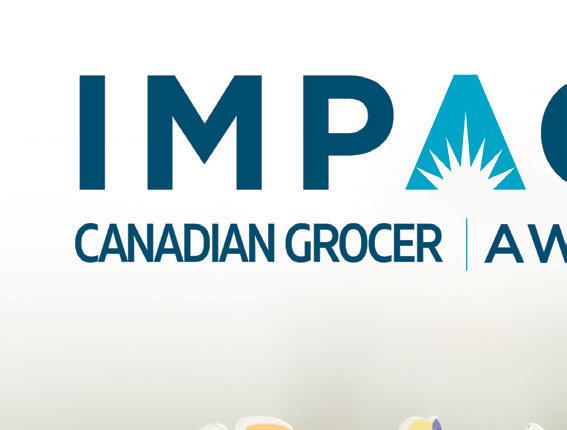





Carlton Cards is delighted to receive recognition for our campaign with the Canadian Mental Health Association, supporting mental well-being through social connection within our communities
a more thoughtful and caring place.”
Every year during the month of October, Carlton Cards donates a portion of proceeds from greeting cards sold at participating retail partners across Canada to the CMHA. While this campaign has been going on for several years, this past year’s efforts included several new elements to amplify both reach and community engagement: there was a weekly social media contest showcasing a themed connection challenge to promote self-care and connection, while a new Connection Calendar was available for download on Carlton Cards’ website. And at a special in-person event at a retail partner’s head office, employees wrote messages in cards to loved ones, each mailed at no cost by Carlton Cards.
Coke Canada Bottling, alongside The Coca-Cola Company, blended purpose with performance in its 2024 “Canada’s Kindest Community” campaign, sparking thousands of acts of kindness, strengthening local ties and driving a 2.2% lift in holiday sales.
Launched on World Kindness Day (Nov. 13) and integrated into the CocaCola Holiday Caravan tour, the campaign invited Canadians to share stories of generosity and nominate their communities. Nearly 600 submissions poured in, with Jarvis, Ont. earning the title and a $50,000 donation to the Norfolk Community Foundation. “As a family-owned, Canadian business, our purpose and growth are rooted in earning our social

license to operate,” says Tony Chow, president of Coke Canada Bottling. “We united our customers, consumers and communities in the joy of the season.”
The campaign involved 180 activations, 650 volunteers and a coast-to-coast retail push that turned grocers into holiday hubs. Walmart led with 360-degree omnichannel support, driving a 37% boost in displays and a 1.2-point gain in market share—19% above target.
Set to return this year, Chow says, “We believe kindness is contagious,” and hopes “that through the magic of the Caravan, Canadians will continue to be inspired to make meaningful contributions in their communities.”
Conagra Brands Canada continued to build upon its strong foundation of giving back this year. “Having the opportunity to help the communities in which we live and work is a privilege and definitely part of the Conagra culture,” says Caroline Nadeau, general manager, Canada. The company’s “Month of Service” (now
actually two months, April and May) has long been a cornerstone of Conagra’s outreach efforts, and 2025 was no exception. “In 2025, Conagra’s Month of Service across Canada, Mexico and the U.S. resulted in 5,473 total volunteer hours, 117 unique projects with 62 unique organizations and 284,271 total pounds of food distributed,” says Tonya Moncrieffe, director of human resources.
But Conagra’s giving spirit goes well beyond those two months. Over the past year, Conagra employees volunteered with key organizations such as Seva Food Bank, Food Banks Mississauga, Dresden Community Food Bank and more. Other recent highlights include Conagra employees raising more than $28,000 to support the company’s United Way campaign and more than $17,000 to Hockey Helps the Homeless. Conagra Brands Canada also earned the 2025 Food Rescue Award from Second Harvest. “Sharing our time and/or resources in order to fight food insecurity and build overall stronger communities is something we continuously strive to do,” says Nadeau.



Lactalis Canada is proud to receive the Canadian Grocer Impact Award in the Sustainability category for its new state-of-the-art Oshawa Distribution Centre. This facility enables Lactalis Canada to further meet the evolving needs of its business and valued customers, while its sustainable design drives supply chain network efficiency in alignment with the company’s ESG framework.




For the fourth year in a row, we’re honoured to receive the Canadian Grocer Impact Award with our P’tits Projets pas si P’tits program. This year, our project was located beneath the church in the town of Delson, Quebec.
In towns and villages across Quebec, church basements have long served as community gathering places, hosting dinners, fundraisers, bingo nights and more. Delson was no exception.
Thanks to this project, Delson’s residents and families can now gather in a revamped lounge, which hosts various municipal and community events.
P’tit Québec is proud to bring communities together around home-cooked meals again this year, as they’ve been doing for 60 years.
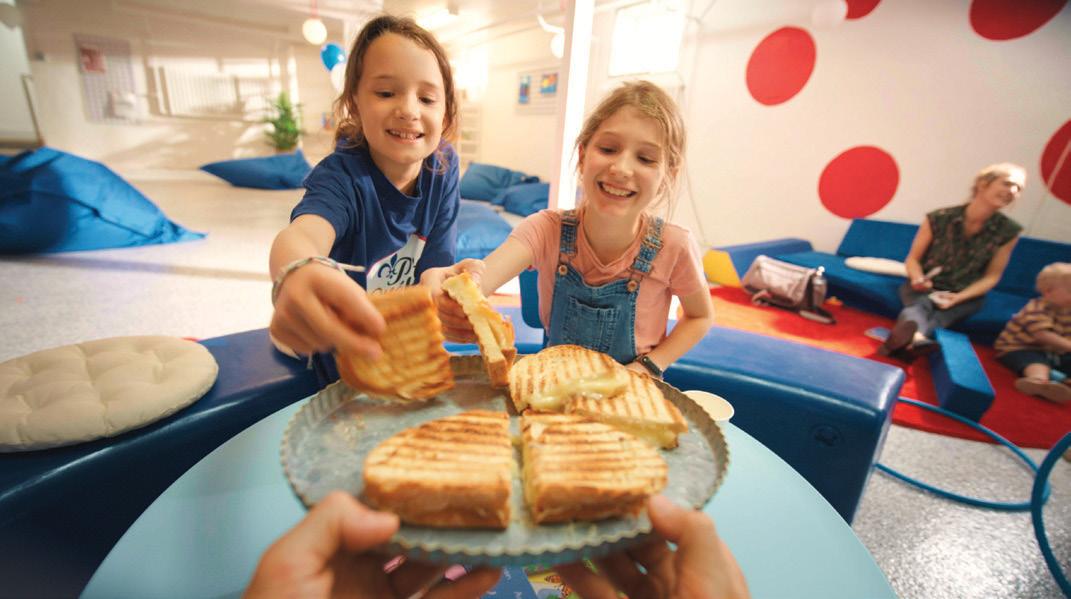

Learn more about our community impact.



One in three Canadian children are at risk of starting their day on an empty stomach—a challenge Danone Canada has been addressing through its nearly 30-year partnership with the Breakfast Club of Canada.
As part of this commitment, Danone Canada launched the Feed a Child Challenge, a nationwide effort designed to maximize support for school breakfast programs and to empower employee and partner participation.
Danone Canada raised $70,000 in last year’s campaign through an auction, peer-to-peer fundraising and partnership pledges, providing approximately 35,000 breakfasts for children nationwide.
A raffle component has been introduced in the new campaign, which began June 30. It offers low-cost donation opportunities and free entries for Danone employees who volunteer with the Breakfast Club or at local food banks.
The Feed a Child Challenge “has grown and evolved over the years, reflecting the unwavering dedication of our employees and our enduring commitment to fighting childhood food insecurity,” says Iannick Melançon, senior vice-president, customer and commercial sales at Danone Canada.
Melançon says the campaign goes beyond fundraising by engaging Danone’s teams, partners and communities. “This campaign creates meaningful connections and delivers real impact where it matters most. It’s about more than meals—it’s about nourishing futures and making a lasting difference.”
Now in its second year, Farm Boy’s flagship charitable program, Nourish to Flourish, has scaled up its impact across Ontario schools, tripling its total grant funding and expanding to 46 school communities for the 2025-26 academic year.

Launched in summer 2024 to address student food insecurity and the need for early food education, Nourish to Flourish offers tiered grants for school meal programs and food literacy initiatives such as workshops and gardens. In its inaugural year, the program received more than 500 applications and awarded $55,000 in funding. This year, Farm Boy will distribute $161,000 in grants, reinforcing its commitment to equitable access to healthy food for Ontario’s youth.
“We launched Nourish to Flourish with a clear purpose of being good neighbours, but what’s truly moving is seeing how schools take these grants and turn them into something local, joyful and lasting,” says Alessandra Bisaillon, Farm Boy’s director of marketing and PR. “It’s a real reflection of community and creativity.”
The initiative is delivered in partnership with Sustain Ontario and Farm to Cafeteria Canada, and is supported by in-store fundraising, including a checkout campaign that wrapped up in June 2025.
When wildfires broke out in Jasper, Alta. in July 2024, the Jasper Volunteer Fire Brigade bravely stood on the front lines. And while Freson Bros. doesn’t operate a store in Jasper, the Alberta grocery chain quickly launched a heartfelt, province-wide fundraising campaign to show support. “We felt it was important to recognize and support the Jasper Volunteer Fire Brigade for their incredible work,” says Paul Lovsin, Hinton Hill store manager. “The strength and courage shown by those men and women was nothing short of extraordinary.”
From Aug. 2 to 15, all 17 store locations encouraged customers to donate in $5 increments at checkout, with the
company matching contributions up to $50,000. The response was overwhelming: customers donated $99,275, bringing the total raised for the brigade to $149,275. A spontaneous barbecue fundraiser hosted by one store in the early days of the evacuation helped set the tone for the campaign, which gained momentum thanks to effective cross-team coordination, strong in-store visibility and province-wide media amplification. The campaign’s success not only strengthened ties with local communities, it also became a blueprint for how Freson Bros. can mobilize its stores quickly and effectively in times of crisis. “It was inspiring to see the entire province come together,” Lovsin says. “The outpouring of support and donations truly reflected the spirit of Alberta.”
Community service has long been a key ingredient in the values General Mills Canada upholds, with a history of supporting and encouraging employees to volunteer and give back.
The company boasts a national volunteerism rate that is consistently over 85%, with programs including its United Way Giving Campaign, Global Volunteer Week, Breakfast for Kids Program and World Food Day. This year it added initiatives, including a winter gear drive in support of a women’s shelter, a holiday toy drive and a kit-building session, where employees built 72 craft kits for a charity for children with autism.
Employees also participated in Letters to Elders with Sending Sunshine, providing companionship through handwritten cards to seniors. In December 2024, employees wrote more than 50 letters to be mailed out to elders across Canada.
“Over the past year, we’ve been proud



PepsiCo Canada is driving real change, for people and the planet. In 2024 alone, we’ve made meaningful strides in our communities and beyond.
· $1.4 million donated to 319 charities and nonprofits nationwide
· 250+ associates volunteered through our global One Smile At A Time program
· 700+ hours of service contributed
· 23,000+ lbs of food sorted with Food Banks Mississauga Big numbers mean bigger impact.
Thank you to our incredible team and the organizations making a difference every day. PEPSiCO
NAMED SOCiAL IMPACT CHAMPiON FOR 2024



to expand our impact with a growing number of local organizations,” says Vince Mendes de Franca, president, General Mills Canada. “These new partnerships have enabled us to support a broader range of causes in the communities where our employees generously invest their time, energy and passion to help those in need.”
Each year, Kraft Heinz Canada unites Canadians through Kraft Hockeyville, an initiative that invites communities to share heartfelt stories for a chance to win investment in their local arenas. Since 2006, the program has awarded more than $5.4 million to 101 communities and helped unlock more than $100 million in additional infrastructure funding. The result: stronger youth engagement, revitalized recreation spaces and lasting community pride.
“Kraft Hockeyville endures because it celebrates something uniquely Canadian—our love of hockey and the strength of our local communities,” says Simon Laroche, president, Kraft Heinz Canada. “The program brings Canadians together in the most meaningful way and is proof that when we rally together, magic happens.”
In 2024, more than 275 communities submitted about 15,000 nominations. A 10-week, in-store campaign built momentum nationwide, culminating in more than 32 million votes. Elliot Lake, Ont. was named the 2024 champion live on Hockey Night in Canada , earning $250,000 in arena upgrades, $10,000 in equipment and the chance to host an NHL pre-season game, held Sept. 24 in Sudbury, Ont.

The 2024 effort also laid the groundwork for a standout 2025 campaign, which wrapped in April, nearly doubling community participation and delivering its first Quebec winner since 2008.
High costs pose a significant barrier to many Canadian families who would like to register their children in minor league hockey programs. Enter the Kruger Big Assist initiative, which has committed more than $1 million to make hockey more accessible and inclusive across Canada.
Since 2020, the program has donated funds to more than 50 minor hockey associations across the country and has helped more than 1,000 families access the sport.
“Since we launched the Kruger Big Assist five years ago, we’ve seen the tremendous impact the program has had on supporting minor hockey in communities across the country and getting more kids on the ice,” says Susan Irving, chief marketing officer at Kruger Products.
As part of the latest program, five Canadian minor hockey associations received $25,000 each to make hockey more accessible and inclusive in their communities. As decided by a public vote, North Halton Girls Hockey Association won an additional $75,000 grand prize.
Also new this year, Kruger Products introduced an in-store offer where consumers could redeem a limited-edition Kruger Big Assist toque by purchasing a specially marked product pack and uploading their receipt.
By removing financial barriers, Kruger is making the sport more accessible and inclusive for all, Irving says.
The 2024 Cashmere Collection fundraiser, now in its 21st year, showcases elaborate, stylish designer creations made entirely from bathroom tissue. With an ongoing goal of raising awareness and funds for breast cancer, Kruger Products is a long-time partner with the Canadian Cancer Society and Quebec Breast Cancer Foundation, helping raise more than $5 million through the Cashmere Collection.
This year, Kruger launched a multiphased integrated marketing campaign that, for the first time, included a stunt: A model walked Toronto streets wearing a past Cashmere Collection garment, creating immediate social buzz. Days later, during the Canadian Cancer Society’s Run for the Cure event, the model reappeared in the garment—this time with Cashmere officially taking ownership of the stunt across social channels. The campaign culminated in a spectacular runway event with top-tier media, influencers, VIPs, cancer survivors and celebrities all in attendance.
“As we entered the 21st year of this legacy campaign, we continued to challenge ourselves to keep it fresh and relevant— raising mass awareness and rallying Canadians to join the cause. With the addition of new designer talent, trailblazing ideas and innovative partnerships, we were able to elevate the campaign to new heights,” says Susan Irving, the company’s chief marketing officer.



Maple Leaf Foods is proud to be the recipient of the 2025 Canadian Grocer Impact Award in the Sustainability category for our Leadership in Regenerative Agriculture.
We are a purpose-driven company with a bold vision to be the most sustainable protein company on Earth. Advancing regenerative agriculture reinforces the impact of our purpose to Raise the Good in Food and helps bring our vision to life.
As early adopters in this space, we have been driving meaningful change across our supply chain, scaling our program to nearly 250,000 acres by the end of 2024. We’ve built a strong foundation through strategic partnerships that benefit our farmers, strengthen our food systems, and protect the planet.
What is regenerative agriculture?
Regenerative agriculture is a set of farming principles and practices that regenerates the land by capturing carbon from the atmosphere and storing it in the soil, to increase biodiversity, improve soil health, boost farmer livelihoods, and enhance landscape resilience. Regenerative agriculture focuses on practices like reducing soil disturbance, increasing crop diversity, keeping soil covered, and maintaining live roots yearround. These practices create healthier soils, reduce greenhouse gas emissions, and create a more sustainable and resilient cropping system.
What is Maple Leaf Foods doing in regenerative agriculture?
Since 2021, we have teamed up with the world’s largest provider of crop input to help with implementing regenerative agriculture practices on farms that grow the feed for our animals. The program provides end-to-end support for growers, drives sustainability, and boosts profitability. This work also helps meet our intention of sourcing feed that has a lower carbon footprint.
The program incentivizes and educates farmers on what practices are expected to have a positive impact on their land, including improving nutrient-use efficiency while improving their crop yields, and making their soil and land more resilient to extreme weather events.
Maple Leaf Foods is also a founding member of the Canadian Alliance for Net-Zero Agri-Food (CANZA), a national, industryled, multi-stakeholder alliance, committed to driving sustainable outcomes in Canada’s agri-food sector. CANZA promotes the adoption of regenerative agriculture and climate-smart farming practices, helping ensure these practices are sustainable, scalable, and beneficial for Canadian farmers, communities, and the future of our food system.

www.mapleleaffoods.com/our-commitments/integrated-report
For the last 60 years, P’tit Québec cheese has been a mainstay in rural Quebec towns, many of which do not receive the same level of financial attention that big cities do when it comes to local initiatives that benefit citizens.
Realizing its role in Quebec, P’tit Québec has, through its P’tits projets pas si p’tits (Not-so-small, small projects) program, been helping small towns complete small projects that usually go unfinished due to lack of resources.
Last fall, in the fourth year of the campaign, P’tit Québec embarked on its most ambitious project—transforming the town of Delson’s church basement into the new P’tit Lounge. More than $65,000 was spent to create a community space with a coffee bar, kids’ corner, and new seating and lighting.
“Since 2021, P’tit Québec has been dedicated to strengthening communities across Quebec by creating spaces where people can come together, and Delson marked our biggest community project yet. To date, we have given over $200,000 to bring this vision to life,” says Vince Vetere, general manager, cheese and tablespreads at Lactalis Canada.
Demand for the initiative is growing and “we look forward to continuing to make a difference with this program— helping Quebecers one town at a time.”
Serving small rural communities in Eastern Ontario and Western Quebec, Mike Dean Local Grocer’s impact reaches all the way to Nunavut—home to some of Canada’s most remote and food-insecure populations.
Since January 2019, the family-owned grocer has flown more than 6,000 food hampers annually to nearly every hamlet in the territory. The operation spans

multiple airports and involves Arctic Fresh—an online food grocer in Nunavut that handles last-mile delivery—along with hundreds of volunteer hours from staff and local high school students who pack the hampers.
“We ship every week,” says owner Gordon Dean. “From the moment it leaves our warehouse to the end consumer, it might be in transit for five to 15 days.” Dean’s team has steadily increased the amount of fresh produce in those hampers, alongside shelf-stable staples. “The Far North doesn’t get enough perishables, so we’ve spent years figuring out how they can survive the long commute in the best shape possible,” he says.
Noting the socio-economic similarities between his store communities and those in Nunavut, Dean says the initiative is “really about community helping community. And we take great pride in making it happen efficiently and affordably, year after year.”


In 2016, Save-On-Foods pledged to donate $15 million to the BC Children’s Hospital Foundation over a period of 10 years. But by the fall of 2024, two years ahead of schedule, the grocer had already reached its ambitious goal—an achievement reflecting the passion and dedication of Save-On-Foods’ team members and customers toward children’s health. Save-On-Foods’ donations supported a variety of critical hospital priorities, including a first-of-its-kind immunization clinic, cutting-edge 3D echocardiography and a CO2 laser that helps reduce pain for young burn patients. And the fundraising was powered by countless fun, innovative grassroots efforts across stores and corporate offices. From barbecues to dunk tanks to Halloween pumpkin contests, team members came together with enthusiasm to fulfil the pledge. To celebrate reaching the big goal, 350 Save-On-Foods assistant managers broke a Guinness World Record by assembling 4,007 hospital care packages in just 20 minutes—and the company announced a new 10-year pledge to raise another $15 million for BC Children’s Hospital starting in 2025, this time aimed at youth mental health programs.
What began as a crisis response in the early days of COVID-19 has evolved into a powerful ongoing effort to fight hygiene poverty by B.C.-based Tru Earth. In 2020, the eco-friendly laundry detergent company created its Tru Giving program to address urgent shortages of often-overlooked items such as laundry detergent among food banks and community organizations—and the program quickly proved too important to be temporary.
For every $25 of Tru Earth products purchased anywhere in the world, the organization donates enough laundry detergent to provide one person in need with clean clothes for a month. Since March 2020, the company has donated more than 57 million laundry strips globally. Tru Giving now works with more than 1,500 community organizations, including Food Banks Canada, Greater Vancouver Food Bank, Calgary Food Bank and Daily Bread Food Bank. In 2025, Tru Earth aims to donate more than 10 million laundry loads and expand to 750 new non-profit partners. “I am incredibly proud of what we’ve accomplished



















Kruger Products is honoured to be recognized for our positive impact on communities across Canada through two of our programs: Kruger Big Assist and Cashmere Collection.






Over the past 5 years, the Kruger Big Assist has committed over $1 million to make hockey more accessible and inclusive in communities across Canada. For over 21 years, the Cashmere Collection has raised over $5 million dollars for breast cancer support through donations from our annual Fashion with Compassion platform and specially marked packages sales.


together with our retail partners and customers through Tru Giving,” says chief revenue officer John Murphy.
In 2024, Vince’s Market became a certified Dementia Friendly Community (DFC), starting with the training of more than 75% of its customer-facing team members. “[It] was a combination of in-person and online learning,” says Maria Ciarlandini, community support ambassador at Vince’s Market.
To build on that momentum, Vince’s selected the Alzheimer Societies of York Region, Durham and Simcoe County as recipients of its Vince’s Community Product Initiative (#VCPI) for 2025. Across all four store locations, 15% of sales from partner brands, such as Maple Leaf Foods and Saputo, were directed toward supporting essential programs. As of early July, the initiative had raised more than $14,000 for caregiver support groups, educational workshops and respite services.
“Looking ahead, we aim to deepen our commitment through continued staff education with our DFC certification,” says Ciarlandini. She has also joined the Dementia Friendly Communities committee to help guide the program’s growth and ensure Vince’s Market remains a leader in dementia-friendly retail. “Our vision is to make dementia awareness a permanent pillar of our community engagement strategy,” she adds.


As part of its ongoing Diversity, Equity, and Belonging program, Bimbo Canada recently partnered with Level Playing Field, an accessibility consulting agency. The agency conducted on-site assessments to establish action plans for each Bimbo Canada site to create a fully inclusive, safe and accessible working environment for people of all abilities.
In tandem, the company introduced inclusive language standards in signage and communications to better reflect the diversity of its people. It also launched two pilot programs in partnership with Ready, Willing and Able (an organization that helps companies with inclusive hiring) to support employment for those with intellectual disabilities or on the autism spectrum.
“This wasn’t treated as a one-time campaign or stand-alone program, but rather as a cultural shift embedded into every part of how we work, lead and support one another,” says Leslee Wills, the company’s vice-president people and corporate affairs.
Company associates were also invited to celebrate their cultural identity by sharing their countries of origin, cultural traditions, stories, photos and fun facts—transforming the workplace walls into vibrant symbols of inclusion.
“Seeing individuals share their lived experiences and cultural perspectives in such a vulnerable and educational way tells us that we are genuinely creating spaces where people feel safe and valued,” says Wills.

To support its employees in achieving their career ambitions, Nestlé Canada launched its first-ever Development Week in May, where employees were invited to participate in activities designed to enhance their career development.
The week kicked off with a panel discussion where employees shared their diverse career journeys and developmental experiences. Two Talent Expos were held at the North York and Brampton offices, where employees received career advice, learned about development opportunities at Nestlé, joined employee resource groups and networked with colleagues from various departments. The Talent Expo was also developed as a webinar for remote employees.
“Development Week was created as a direct response to what we heard from our people—they wanted more tools, more visibility and more ownership over their career journeys. This initiative was about more than just programming; it was about empowering our employees to take the lead in shaping their futures,” says Karine Laverdière, the company’s senior vice-president, human resources. Laverdière adds the week “reaffirmed our belief that when we invest in our people, we unlock innovation, resilience and a stronger Nestlé.”

Since 2017, Renée Hopfner has led Sobeys’ partnership with Canada’s Children’s Hospital Foundations, launching the initiative amid the COVID-19 pandemic and securing its renewal through 2030.
The initiative has raised more than $20 million, supporting youth mental health and helping more than 120,000 young people nationwide. “Almost 100 new treatment spaces have
Rob Morphew has been instrumental in ensuring Calgary Co-op’s purpose statement—“To enrich our member communities”—becomes a reality.
Since 2020, the health, safety and environment director at Calgary Co-op has led key environmental projects— including its Fresh Food Rescue Program, waste reduction initiatives throughout the organization and a battery recycling program—that have grown year after year.
The Fresh Food Rescue Program required extensive staff buy-in, which Morphew achieved through education, enthusiasm and leading by example. Launched as a pilot at six stores in 2021, the program has since expanded to all 22 Calgary Co-op Food Centres. In 2024 alone, more than one million pounds of food was sent to partner food banks.
“I’ve always believed that meaningful change often begins with something small—a conversation, a fresh idea, a moment of curiosity,” Morphew says. “Over the past 20 years with Calgary Co-op, that belief has been reinforced time and time again. I’ve seen first-hand how even the smallest efforts can grow into so much more—something that has a real impact on the communities we serve, especially when you’re part of a team that values innovation and community impact.”
been added or enhanced, and thousands of care providers have accessed training to enhance their skills,” says Hopfner.
She also volunteers at Children’s Hospitals and serves on the board of children’s mental health centre Wood’s Homes in Calgary. “I’ve stood beside family and friends who have had to navigate their own mental health challenges,” she says. “When meeting with our community partners, patient ambassadors or teammates, my own experiences and the stories I

MATT JUDD Director of Transportation and Logistics Excellence NESTLÉ

Matt Judd isn’t just moving products at Nestlé Canada— he’s moving the needle on the company’s global goal to reach net-zero greenhouse gas (GHG) emissions by 2050. Since 2017, Judd has led sustainability efforts in transportation and logistics. His proudest stat? “Our roadto-rail usage stands at 98.75% for long-haul distances,” he says. “Recognizing the emissions reduction potential of rail, we have consistently maintained over 90% usage for the past decade.” This has resulted in
hear in the community are an inspiration to grow our impact.”
Crediting support from the Sobeys executive team, The Sobey Foundation, teammates, supplier partners and generous customers, “our first five years of the partnership demonstrated what’s possible,” says Hopfner. “Our next five years will focus on further expanding our collective impact to help children’s hospitals fuel innovation, empower care teams and ensure families know they are not alone.”
up to a 75% reduction in GHG emissions compared to road transport.
“My motivation stems from a deep commitment to preserving resources for the long term,” explains Judd. “Collaboration with our partners and customers is essential, as our sustainability goals require a united effort beyond Nestlé alone.”
Under his leadership, Nestlé Canada is piloting EVs in distribution and exploring bio-LNG (bio-Liquefied Natural Gas) solutions on continuing to reduce the environmental impact of its value chain. He’s also passionate about sharing best practices, leading educational initiatives with universities such as McMaster, and mentorship, including through the Nestlé Needs Youth initiative. “I am committed to nurturing the next generation of leaders to become customer-centric, agile and environmentally conscious, ultimately, shaping a brighter future,” he says.

Senior Director, Franchise and Partnerships
PEPSICO CANADA
Jason Lemaich has spent much of his career at PepsiCo Canada donating time outside his day job as the company’s senior director, franchise and partnerships to advance the efforts of The PepsiCo Canada Foundation. The foundation focuses on fundraising and soliciting donations to support activities, programs and education that promote physical activity, healthy habits and wellness, especially among
underprivileged youth.
Lemaich’s key contributions include playing an integral role in Rock the Foundation, a one-night concert showcasing PepsiCo Canada employees’ musical talent, serving on The PepsiCo Canada Foundation board, and hosting the company’s annual GTA Golf Tournament Auction.
Under the leadership of Lemaich, who serves in the unofficial PepsiCo Canada band as a drummer, the 2024 Rock the Foundation event raised $33,000. Rock the Foundation raises funds for The PepsiCo Canada Foundation’s Associate Charity Grants program, which allows PepsiCo associates to apply for grants to support charities with which they’re involved.
“While planning and executing our fundraising events takes a significant investment in time, it provides me with a great deal of pride to see the impact that our supported charities make,” Lemaich says of the foundation.

RAMILA MUDARTH Senior Manager, Program
Management, PC Optimum
Inspired by a mentor and co-lead in Loblaw’s Women in Technology (WIT) employee resource group, Ramila Mudarth began as a “silent observer” before stepping up to co-lead the Career sub pillar, co-ordinating more than 100 volunteers.
“I quickly fell in love with the monthly connects,” says Mudarth. “It was incredibly refreshing to meet likeminded people, all passionate about supporting women in the tech pillars.”
She launched a four-week mentorship series on imposter syndrome, capped by a
As regional logistics manager, Atlantic at Bimbo Canada, Doug Rose makes a meaningful impact through local projects, product donations and sustainability initiatives.
Rose’s team completed five of the company’s Good Neighbour projects in the Moncton, N.B. area in 2024, contributing more than $15,000 to local, non-profits and 250 associate volunteer hours to local organizations.
He also set up a product donation partnership, which has grown to include several local, non-profit organizations and food banks, and contributes approximately 175,000 units of product to the community per year.
In addition, Rose was involved in a partnership with a local biotechnology firm in Moncton to divert food waste from the Moncton Sales Centre, upcycling Bimbo Canada’s product returns waste for the generation of insect protein bound for agricultural applications. The partnership is helping Bimbo Canada diversify its diversion options, support local innovation and achieve its target of zero waste to landfill for all Canadian operations by the end of this year.
“I am motivated by the opportunity to help make a positive change in someone’s life,” says Rose. Giving back to communities through the Good Neighbour program “brings much joy to me and allows me to make a difference.”

100-person speed mentoring event; led Loblaw’s participation in the Shoppers Drug Mart Run for Women, raising $2,500 for mental health; and moderated the company’s most-listened-to podcast on menopause. She also introduced a flexible volunteer model to help colleagues contribute “without feeling pressured or guilty.”
Mudarth continues to champion bold conversations—including International Women’s Day panels on ageism and returnto-work experiences—and
build inclusive learning spaces through book clubs, peer circles and events on wellness, personal branding and confidence.
Looking ahead, she hopes to partner with Girls Who Code and launch workshops on artifical intelligence and data visualization. “My journey with WIT has been transformative,” she says. “I’ve learned the power of community, the importance of mentorship and the need for flexible volunteer opportunities. I’m excited to see what the future holds.”




General Mills Canada is the proud recipient of two 2025 Grocer Impact Awards.




Congratulations Renée!
A champion of community initiatives, Renée brings a collaborative spirit to her role as Head of Corporate Citizenship at Sobeys Inc. Whether it’s building long-term partnerships with children’s hospitals or supporting early mental health programs for kids and teens, she works with teams across the business to turn ideas into impact. Her recognition as a 2025 Impact Award Champion by Canadian Grocer speaks to that everyday work — and we’re proud to celebrate it with her.


What started as a seasonal special at Vancouver’s Be Fresh Market quickly became a viral sensation—and a standout example of sustainability in action. Launched in March 2025, Be Fresh’s Banana Bread Matcha is a low-waste beverage that combines ceremonial-grade matcha with house-baked banana bread made from overripe bananas that would otherwise be discarded. “Overripe bananas are something we have on hand almost daily, so turning them into a yummy coffee bar drink felt like the perfect fit for our grocer/café concept,” says market manager Ashley Sugar.
The idea was the brainchild of a creative staff member, and the front-ofhouse barista team was heavily involved in taste testing to refine the recipe. A post about the Banana Bread Matcha quickly took off on TikTok and Instagram Reels, generating widespread buzz. “Suddenly, it wasn’t just our regulars coming in to try it. People from all over the city were showing up,” says Sugar. Since its debut, it has driven a 200% increase in café beverage sales and inspired a wave of upcycled product and sustainability ideas from Be Fresh team members. Now a permanent menu item, the drink has also become a case study in Be Fresh’s staff training program. “It’s a blueprint for sustainable innovation,” says Sugar.
Burnbrae Farms has long prioritized waste diversion by recycling materials such as paper, cardboard, metal and plastic, while seeking new ways to minimize landfill and divert waste. One of those ways is the recently launched soil enhancer, Terrabrae, made from repurposed eggshells from Burnbrae’s processing operations.
“Terrabrae breathes new life into what was once a byproduct, transforming it into a nutrient-rich solution for gardens, plants and lawns,” says Pam Kellogg, vice-president consumer marketing at Burnbrae. “While a tried-and-tested tool for seasoned gardeners, utilizing eggshells in the garden is a relatively new concept to many consumers. That’s why . . . we built an educational layer into our campaign to ensure our messaging was exciting and informative.”
Among other initiatives, Burnbrae launched a recycling program at its Winnipeg facility to divert used personal protective equipment (PPE) from landfill. PPE can be difficult to recycle due to mixed materials and contamination risks. Through this program, worn PPE is collected and sent for specialized recycling. Since 2024, the Burnbrae Winnipeg plant has recycled 1.3 megatons of PPE. By the end of 2024, the company’s total waste diversion was 91%, with a goal of further reductions year over year.
DashMart is DoorDash’s convenient platform for delivering household essentials and grocery staples to busy consumers— but behind the scenes, it’s also reducing food waste and fighting food insecurity through a powerful initiative. Launched in 2021, the DashMart Food Recovery Program diverts quality perishables nearing their sell-by date to community organizations, keeping them out of landfill and redirecting them to those in need. “The DashMart Food Recovery Program is a natural extension of DoorDash’s mission to grow and empower local communities,” says Umair Khan, general manager of DashMart at DoorDash Canada. “We’re able to reduce waste while directly addressing food insecurity in the communities we serve.”
DashMart uses its sophisticated demand forecasting and real-time inventory systems to reduce excess in the first place; but when surplus food remains, associates at sites across the country step in. Twice a week, on average, they carefully sort and package items such as produce, meat and pantry staples for local non-profits such as Vancouver Food Runners, Edmonton Food Bank and Siloam Mission in Winnipeg. As a result, the program has already provided tens of thousands of pounds of food to individuals experiencing food insecurity.
“It’s a practical, scalable way to turn our logistics and operational strengths into real social and environmental impact,” Khan says.
Ontario-based Eco Guardian is launching the first made-in-Canada manufacturing facility of its kind dedicated to creating sustainable paper cups, food containers and paper boxes.
Slated to open this fall, the Aurora, Ont. facility marks a major step forward in the transition away from single-use plastics and toward a cleaner, greener future. The facility will produce 100% compostable and recyclable paper products, made from FSC-certified paper that meet the highest environmental standards, while helping to reduce the carbon footprint of imported packaging.
“We’ll be focusing on bamboo paper, which is more sustainable and made from more renewable sources,” says Eco Guardian CEO Anil Abrol.
He notes that most alternatives to single-use plastics are being imported from abroad, creating supply chain risks and carbon emissions. By onshoring the business, the facility will increase speed to market, leading to efficiencies in logistics and supply chain savings and reducing the environmental impact.
The facility “will create 80 to 100 jobs when fully operational in 12 to 18 months,” Abrol adds. “As soon as this







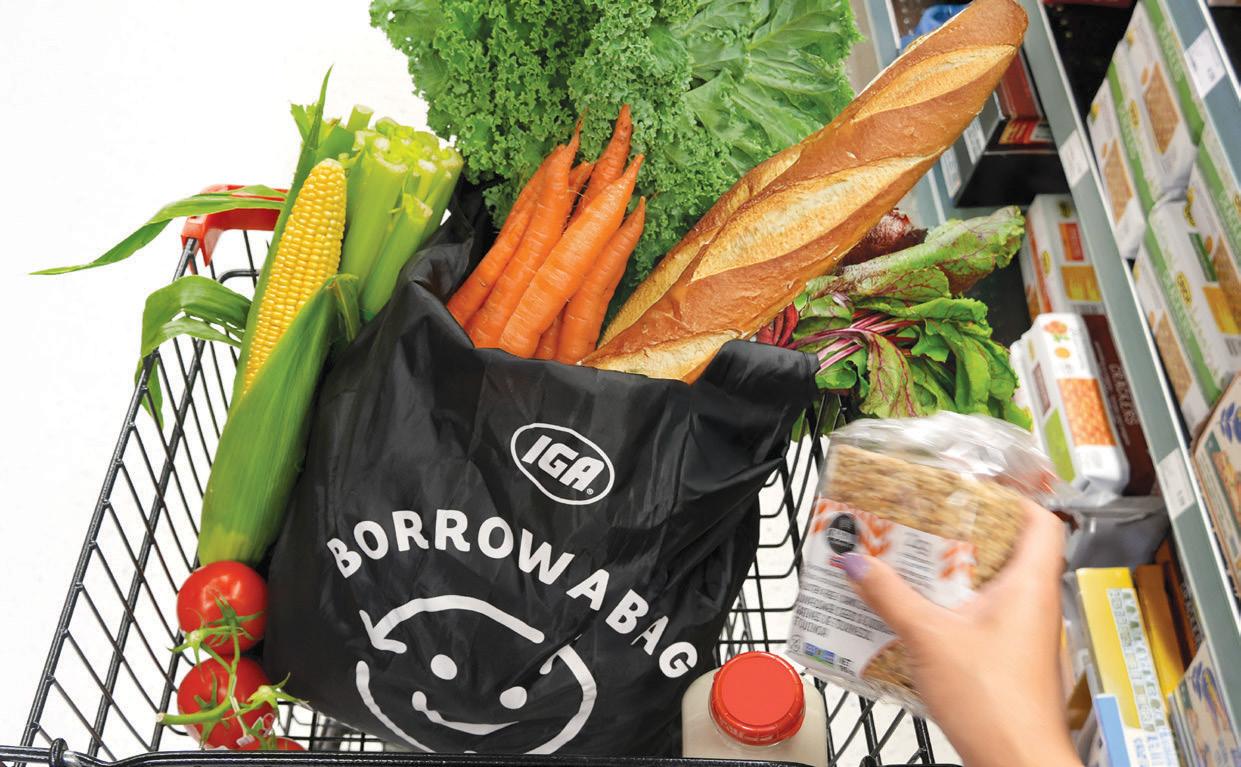


facility is successful, we will expand to other product lines,” building a new generation of packaging for grocers, restaurants and other retailers that is plastic-free and ethically made.
Knowing a healthy planet is critical to continuing to make food the world loves, General Mills is committed to regenerative agriculture. In 2019, the company launched the Northern Plains Pilot Project to support farmers in adopting practices that restore soil health and build climate resilience. Focused on the Canadian Prairies, the initiative offers one-on-one coaching, peer networks and ecological measurement tools tailored to local needs. Then in 2022, General Mills partnered with sustainable agriculture non-profit ALUS to pilot Growing Roots, a program that delivers funding, technical assistance and community-led support to help scale adoption.
In 2024, Growing Roots expanded to two communities each in Manitoba and Saskatchewan and added support for edge field practices, bringing regenerative techniques to about 26,000 acres and 150 producers, with more than 75% of participants new last year. “Through initiatives like the Northern Plains Program
DON’T FORGET TO YOUR OWN

“They’ve demonstrated the power of farmer-to-farmer learning and the effectiveness of locally led programming in driving meaningful change.”
The launch of Canada’s first-ever Borrow a Bag program is a win-win—for customers of Fresh St. Market and IGA in British Columbia and for the environment. Borrow a Bag allows customers to purchase a branded reusable bag for a $2.99 deposit and return it to get their money back when finished. The bag is then laundered and brought back to the store and into circulation.

Borrow a Bag is now offered at most Fresh St. Market and IGA stores, with a growing number of customers participating in the program. “We are focused on encouraging our customers to switch to these reusable bag options and have initiated an educational campaign on the environmental effects of single-use paper bags,” says Palle Knudsen, vice-president, retail operations, Georgia Main Food Group, parent company to Fresh St. and IGA stores in British Columbia.
The company has also partnered with FoodMesh to divert surplus food to benefit individuals and charities across British Columbia. Since 2020, the stores have steadily ramped up food recovery efforts, providing the equivalent of 4,862,725 meals made up of quality fresh produce, dairy, meat, seafood, bakery and deli items to those in need.
Lactalis Canada’s new, state-of-the-art, 379,000-sq.-ft. facility in Oshawa, Ont. is the company’s largest and most energy-efficient facility. Features include heat reclamation from the refrigeration system and a white roof
Lactalis Canada built its new distribution centre in Oshawa, Ont., the company’s largest in the world from a capacity standpoint, with sustainability in mind.
Opened in December 2024, the stateof-the-art, 379,000-sq.-ft. facility was designed to be zero-carbon ready, with the potential to achieve Zero Carbon Building certification.
The facility features energy-efficient lighting, high insulation values and heat reclamation from the refrigeration system. Sustainable design features such as a white roof reduce the heat island effect, contributing to lower cooling costs and energy consumption. There are also plans to install solar panels on the roof to provide renewable power.
The new distribution centre “is a significant example of the work we are doing as part of our environmental, social and governance agenda,” says Eric Seguin, senior vice-president supply chain at Lactalis Canada.
The modern, sustainable design is so far paying off with a 50% improvement in energy efficiency per square foot compared to Lactalis’ conventional facilities, Seguin says. “The addition of this facility in our network represents a key component in our growth story, reinforcing our long-term investment in Canada, its food sector and vital supply chains.”
For nearly 30 years, Danone Canada has partnered with Breakfast Club of Canada to fight childhood food insecurity. Our employee-led Feed a Child Challenge turns purpose into action—raising vital funds through auctions, peer-to-peer campaigns, and physical-activity challenges.





Sustainability is central to our business, driving innovation and employee engagement to reach our long-term goals. We're investing in e cient technologies and community initiatives to reduce emissions and deepen our positive impact.
Sustainability is central to our business, driving innovation and employee engagement to reach our long-term goals.
We're investing in e cient technologies and community initiatives to reduce emissions and deepen our positive impact.
In January 2024, Longo’s partnered with a waste management company and launched a pilot program at its Central Kitchen at its headquarters in Vaughan, Ont. to divert hard plastics and metals from landfills.
Twelve months later, more than 27,000 pounds of hard plastics and metals had been diverted from waste streams, and the program was made permanent.
“This achievement obviously reflects a significant reduction in waste volume and represents a meaningful step toward sustainable resource management,” says Marisa Borgia, sustainability specialist at Longo’s.
By keeping plastics and metal out of landfills, “we’ve helped reduce [the] envi ronmental burden associated with longterm waste decomposition like methane emissions, soil contamination and ground water pollution. It’s also raised awareness among our employees, partners and com munity members about the importance of responsible waste management, and has led the foundation for expanding our circular economy initiatives.”
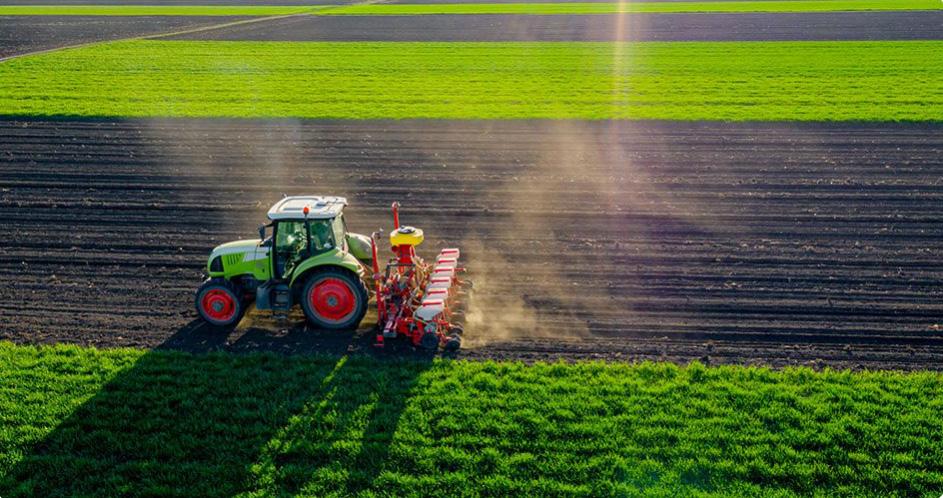
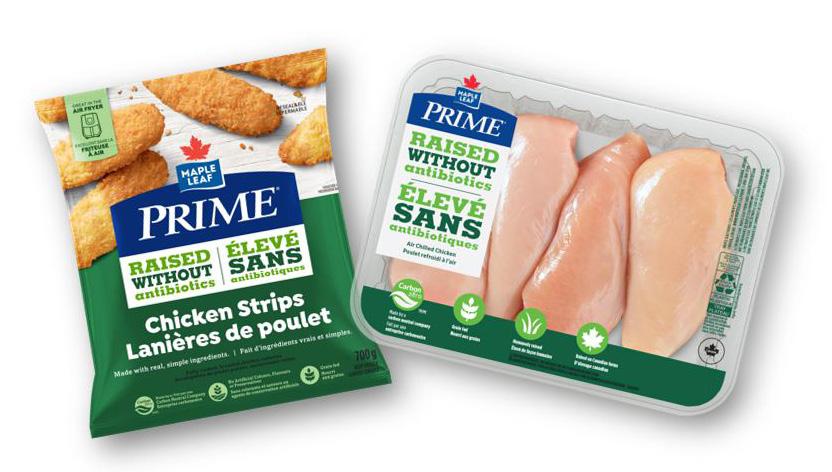

There are now plans to roll out the program to all stores, and to potentially expand to glass and other materials that
Between 2021 and the end of 2024, Maple Leaf Foods expanded its regenerative agriculture efforts from 19,000 acres to more than 250,000 acres
are currently not diverted.
The goal is to divert 90% of waste from landfills from the current 78.7%. “We’re trying to achieve that by the end of this year,” Borgia says.

In 2021, Maple Leaf Foods began investing in regenerative agriculture, a farming approach that aims to restore and enhance the health of the soil, ecosystems and biodiversity. It started with 19,000 acres, which was scaled to more than 250,000 acres by the end of 2024. The program incentivizes and educates farmers on what practices are expected to have a positive impact on their land.
Maple Leaf Foods has continued to increase its investments in this space over the past four years, seeing regenerative agriculture as a powerful tool in the fight against climate change and integrating it into its broader sustainability strategy.
It also participates in a carbon program, which provides end-to-end support for growers, drives sustainability and boosts profitability. This helps meet the company’s intention of sourcing sustainable feed for animals by reducing the carbon footprint of the crops purchased.
“We believe our learnings and those of our project partners can be replicated and scaled to the benefit of farmers, our planet and more resilient and sustainable food systems that provide for us all,” explains Joe McMahan, vice-president, sustainability and shared value at Maple Leaf Foods.

OCTOBER 29- 30, 2025.
FEATURED SPEAKER
Dr. Zahra Bhojani
Sustainability & Enterprise Plastics Lead
Loblaw Companies Limited


Half-day Zero Emission Vehicle Workshop
SAVE $100 WITH EARLY BIRD RATES. BUY TICKETS AT RCCRETAILSUSTAINABILITY.CA
Calgary Co-op is proud to be recognized with two prestigious Impact Awards celebrating our environmental and community leadership.
Impact Champion Rob Morphew
Rob has led transformative sustainability programs that are reducing waste, diverting hazardous materials, and getting fresh food to families in need.




Recognized for our long-standing support of food security and grassroots giving. Thank you to our teams, partners, and members for helping us build a more sustainable and caring community— every single day.
Maple Leaf Foods has created a formal packaging strategy that includes a commitment to reaching its goal of 100% sustainable packaging. “We believe that making our packaging sustainable is both the right thing to do and critical to advancing our purpose and vision,” says Scott Munro, director, packaging technology at Maple Leaf Foods.
“One of the most gratifying aspects of our journey to-date has been achieving our goal of 30% recycled content across all plastics packaging (by weight),” he says. Working closely with its suppliers and packaging industry leaders, Maple Leaf Foods identified and tested a variety of new materials with reduced environmental impacts and better suitability to the recycling infrastructure. In the long run, this move will allow the diversion of plastic from landfills.
Meanwhile, it is the first Canadian protein company to partner with How2Recycle, a standardized labelling system that provides instructions for consumers on proper recycling.
Over the coming years, Maple Leaf Foods plans to continue to collaborate with the packaging industry to deliver more sustainable products that consume fewer resources, are made from recycled content and can be recycled. This includes working to design all its retail packaging to be recycle-ready in preparation for optimized municipal recycling centres.
For Mondelēz Canada, removing its gas oven and installing an electric oven (e-oven) at its East York, Ont. bakery marked an important step in expanding the sustainability of its operations. The result of this move will deliver a substantial reduction in CO2 emissions and greater energy efficiency.
But the transformation was no small feat. It involved more than 17,000 hours of work, with six months of pre-installation and more than four months of demolition and installation.
“We engaged over 100 contractors and turned challenges like part shortages and harsh winter storms into opportunities without any impact to our adjacent production lines,” says Pierina De Carolis, head of corporate affairs and community impact, Mondelēz Canada.
In 2024, the company invested more than $20 million to revolutionize its operations, leading to several firsts within the global organization, including the introduction of the e-oven, the first for the company in North America.
“We’re continuously investing in new manufacturing technologies and reducing our energy emissions through electrification, like the e-oven, and implementing more energy-efficient processes,” adds De Carolis.
Mondelēz Canada has also implemented innovations that target reductions in food waste, electricity consumption
and water usage, while deepening its community impact with programs such as gardens at factories, tree-planting and local cleanup events.
As a neighbourhood grocer operating in Toronto for more than 50 years, Rabba Fine Foods recognizes and embraces sustainability as a core responsibility. So, it set up a Sustainability in Action program, embedding sustainability into its operations, actively reducing food waste, investing in renewable energy and implementing partnerships that benefit both people and the planet.
“Sustainability in Action reflects our commitment to reducing waste, improving how we operate and making practical choices that support the well-being of the local communities we serve,” says Rima Rabba, the retailer’s head of marketing.
Rabba completed a significant solar energy project at the end of 2023. The installation of 2,500 solar panels at Rabba’s Mississauga distribution centres and administration offices now generates more than 1.5 million kWh of electricity annually. This initiative offsets approximately 992 metric tons of CO2 each year, the equivalent of removing more than 200 cars from the road.
“We’re continuing to build on this work by expanding waste-reduction efforts across our network, through partnerships with local organizations and by







introducing innovative technologies to reduce energy use across our stores.” The retailer remains committed to integrating sustainable thinking into every level of its business, says Rabba.
Known for its MadeGood snack brand, Riverside Natural Foods is committed to paying its “fair share of the social and environmental impacts caused by our contribution to the global plastic pollution crisis.”
And so far, the company has offset more than 2.1 million kilograms of plastic since 2021 through a partnership with rePurpose Global.
“RePurpose changed the way we think about packaging,” says Taylor Stanley, Riverside’s corporate impact strategy manager. “We were given the opportunity to take ownership for the materials we send into the world, while improving thousands of lives along the way. It doesn’t get much more win-win than that.”
The Toronto-based company became certified Plastic Neutral through rePurpose in July 2021. This means for every kilogram of plastic leaving its facilities, Riverside funds the collection of an equivalent amount of low-value flexible plastic—much of it from regions with limited waste infrastructure, such as India and Indonesia.
This commitment is part of Riverside’s
broader vision: “To inspire a healthier and more compassionate world, where access to good food is a reality for all.”
From food rescue to ocean-friendly seafood, Stong’s Market in British Columbia takes its responsibility to focus on the health of our planet seriously.
“We have one planet to live and grow food on, so we need to take care of it,” says marketing director Tamsin Carling.
To reduce food waste, Stong’s partners with the Food Stash Foundation, which collects surplus food near expiry and redistributes it to local charities and people in need. A recent checkout campaign at Stong’s raised $5,375 for the foundation. And the grocer’s use of the Too Good To Go app allows customers to buy discounted “Surprise Bags” of unsold food; in the past year alone, the initiative has saved 4,398 meals and prevented nearly 12 metric tonnes of CO2-equivalent emissions. Stong’s also promotes sustainable seafood through its partnerships with Ocean Wise and Skipper Otto, supporting both ocean conservation and local fishing families. Other sustainability initiatives include eliminating automatic checkout receipts—printing only when requested, using EcoChit paper—and offering café discounts to customers who bring their own reusable tumblers. “Through a variety of business practices, Stong’s Market
is making a difference to Mother Nature,” says Carling.
The Bee Cause Project provides schools with everything they need to support thriving schoolyard hives, including expert consultations, resources and curriculum. For the past decade, Whole Kids —a program pillar of the Whole Foods Market Foundation—has partnered with the non-profit to award more than 1,110 educational beehives, providing more than $2.1 million in pollinator education that has reached 1.4 million students. This year, the foundation invested more than $167,000 in Canadian programs, including seven bee grants.
“As we celebrate a decade of impactful partnership with Whole Foods Market Foundation, we’re reminded that this milestone is just one step in a much larger journey,” says Tami Enright, executive director of The Bee Cause Project. “Together, we’re not only supporting pollinators—we’re cultivating future environmental leaders, connecting kids to where their food comes from, promoting access to nutritious food and creating lasting change in communities.”
The transformational program is key to Whole Foods’ mission to improve children’s access to nutritious food, support healthy food education and spark curiosity about where food comes from. CG
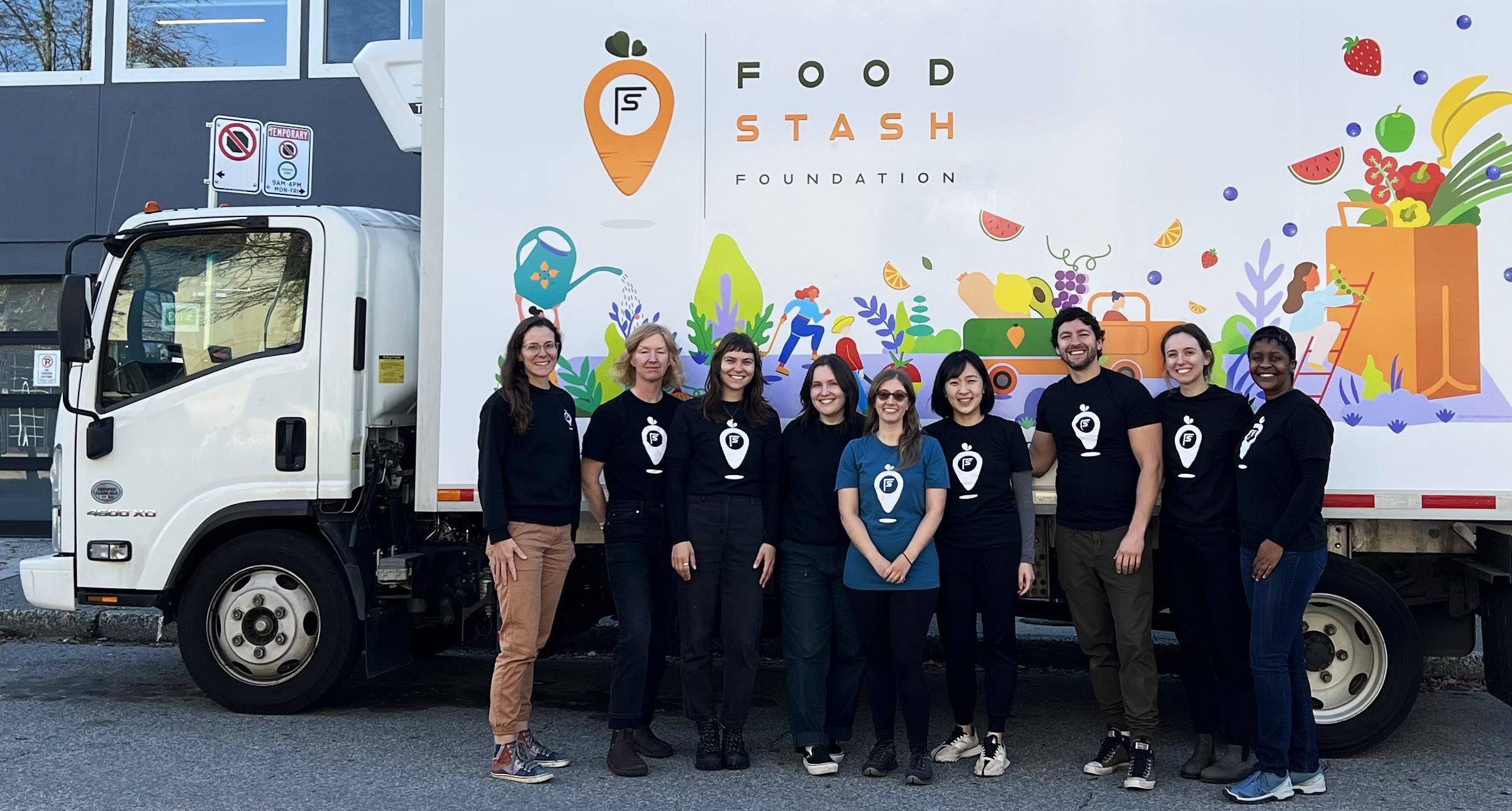

Our private brands were honoured with 8 Canadian Grand Prix New Product Awards for delivering products that lead through innovation, meet consumer needs, and raise the bar on quality. Congratulations to all the teams whose talent and dedication made this achievement possible.







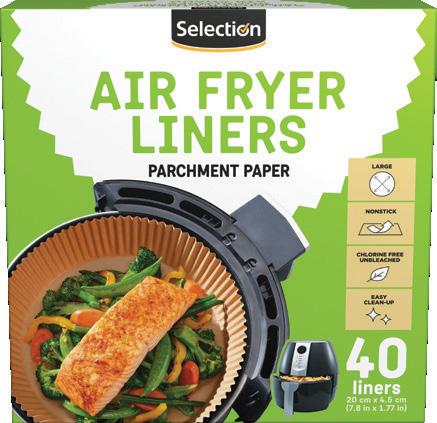
A look at the most notable food and consumer goods products launched in the Canadian market in 2024
From easy-to-prepare entrees, to indulgent desserts and a diverse lineup of plant-based products, the 46 winners of the Retail Council of Canada’s 32nd annual Canadian Grand Prix New Product Awards represent the innovation, quality and variety driving today’s food and beverage landscape.
Here’s a look at this year’s winners:


Fresh & Refrigerated Prepared Foods & Entrees
Burnbrae Farms | EGGS2go!
Coffee & Tea
Café William | Sailboat CoffeeColombia Anei
Frozen Sides & Appetizers
Cavendish Farms | Quick Crisp
Shelf Stable Prepared Foods & Entrees
Clover Leaf Seafoods Corp. | Clover Leaf Tuna Salad

Bakery Fresh (Par-Baked)
Dempster’s Signature | Dempster’s Signature Brioche Style Gold Bread





















































Dairy (Milk, Yogurt, Cheese & Spreadables)
Fromagerie L’Ancêtre | Organic Grass Fed Cheddar
Meat, Egg & Seafood Fresh/Refrigerated or Frozen
Gray Ridge Eggs | Conestoga Farms Free Run
Omega-3 + Lutein Eggs
Plant Based & Alternative Foods
Jordans Cereals | No Added Sugar Granola
Baking Needs & Dried Bakery
Lantic | Lantic Maple Pouches
Condiments & Sauces
Mandy’s Salads | Mandy’s Dressings
Beverages
Medallion Milk Co. | Over the Moooon-Chocolate Milk Mix
Snack (Sweet)
Mondelēz Canada | Oreo
Frozen Entrees
Oggi Foods | Napoletana
Snack (Savoury)
Poptastic | Poptastic
Confectionery & Shelf Stable Desserts
Purdys Chocolatier | Vegan Dark Chocolate Collection
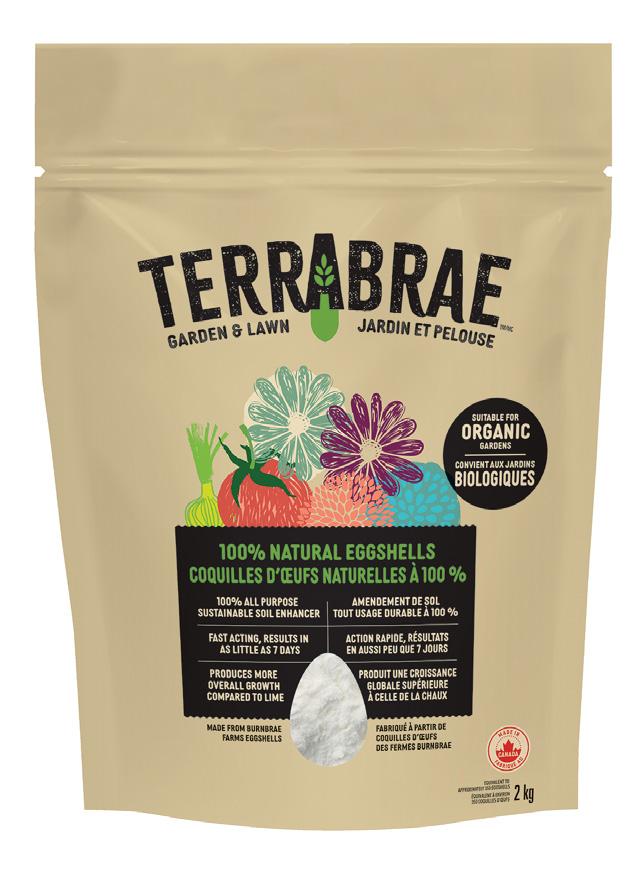





General Merchandise
Burnbrae Farms | Terrabrae Eggshell Soil Enhancer
Paper, Plastic, Foil & Wood
Kruger Products | Scotties Ultra Soft
Pet Needs
Nestlé Purina PetCare | Tidy Cats Tidycare Alert
Multi-Cat Non-Clumping Litter
Health & Beauty
Unilever Canada | Dove Serum Body Washes Collection



































































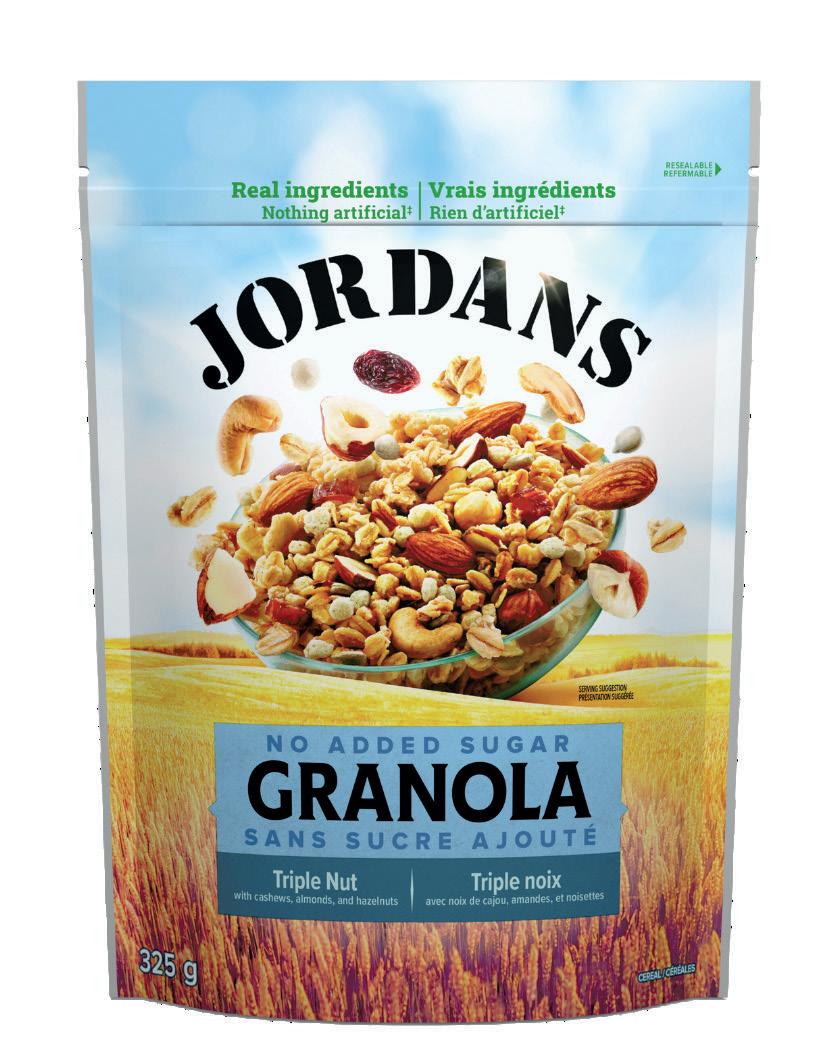









Shelf Stable Prepared Foods & Entrees
Calgary Co-op | Cal & Gary’s Artisan Pasta
Fresh & Refrigerated Prepared Foods & Entrees
Federated Co-operatives Limited | Co-op Gold Pork Carnita & Co-op Gold Beef Barbacoa
Frozen Sides & Appetizers
Federated Co-operatives Limited | Co-op Gold Perogies
Snack (Savoury)
Federated Co-operatives Limited | Co-op Gold Snack Mix
Desserts, Fresh/Refrigerated or Frozen
Loblaw Companies Limited | Northern Spanish-Style Basque Cheesecake
Frozen Entrees
Loblaw Companies Limited | President’s
Choice Soups and Entrees
Fruit, Vegetable & Produce (Fresh/ Refrigerated or Frozen)
Loblaw Companies Limited | No Name Naturally Imperfect Strawberries
Beverages
Metro | Life Smart Organic Kombucha
Confectionery & Shelf Stable Desserts
Metro | Irrésistible Christmas Confectioneries
Meat, Egg & Seafood Fresh/Refrigerated or Frozen
Metro | Irrésistible Beef Bavette
Plant Based & Alternative Foods


Metro | Life Smart Naturalia Oat Beverages
Condiments & Sauces
Pattison Food Group | Western Family
Mayonnaise Style Dressing
Bakery Fresh (Par-Baked)
Sobeys | Compliments Mistletoe Wish Muffins
Dairy (Milk, Yogurt, Cheese & Spreadables)
Sobeys | Chalo! Dahi Plain Yogurt
Snack (Sweet)
Sobeys | Panache Milk Chocolate Bark















Appliance & Cookware
Loblaw Companies Limited | President’s Choice
Honeycomb-Clad Cookware
Child Care
Metro | Personnelle Baby Teether
General Merchandise
Metro | Personnelle Weighted Plush Toy
Healthy & Beauty
Metro | Personnelle Lubricated Latex Condoms
Paper, Plastic, Foil & Wood
Metro | Selection Air Fryer Parchment
Paper Liners
Pet Needs
Pet Valu Canada | Performatrin
Culinary Gently Cooked
Health Care – Over the Counter
Rexall Pharmacy Group | Be Better Collagen Peptides

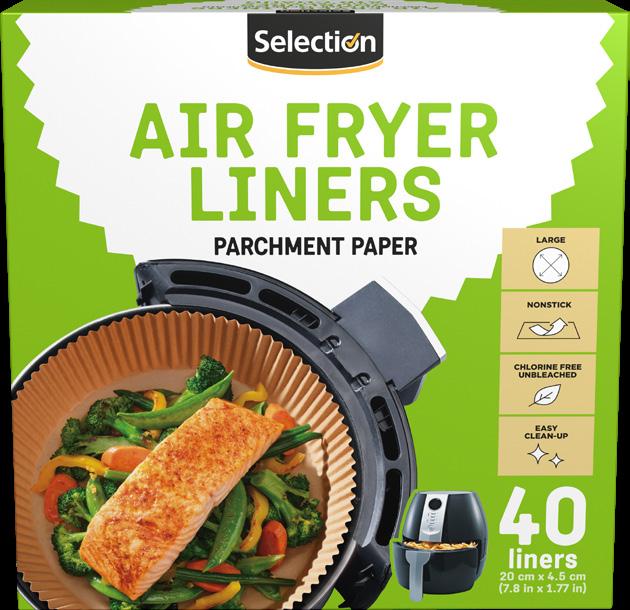

Innovation & Originality
Burnbrae Farms | Terrabrae Eggshell Soil Enhancer
All Canadian AND Overall Consumer Value
Loblaw Companies Limited | Northern Spanish-Style Basque Cheesecake
Excellence in Ethnic Products
Mimi Food Products | Gourmet Pizza Express - Pizza Dough Balls
Innovative Packaging Poptastic | Poptastic













By Rebecca Harris
FROM GUT HEALTH to greenhouse gases, Canadians are thinking more critically about what they eat—and the organic market is reaping the benefits.
According to the Canadian Organic Trade Association (COTA), Canada’s organic food market reached $9 billion by the end of 2023—up 11% since 2020. Fresh organic produce and dairy are among the top-selling categories and continue to thrive despite inflationary pressures.
“The economic climate has led to more cautious spending, but not a wholesale retreat from organic,” says Tia Loftsgard, executive director of COTA. “Despite inflation, many consumers continue to prioritize organic for health, environmental and ethical reasons.”
THE LONG GAME FOR HEALTH AND WELLNESS
Health is a growing driver for organic purchases, especially as more Canadians view food as medicine, notes Loftsgard. “Consumers are making the connection between a healthy microbiome and avoiding foods with dyes, preservatives, synthetic chemicals and genetically engineered ingredients or seeds,” she says. “This awareness is fuelling demand for fresh organic foods that are nutrient-dense, minimally processed and
sustainably produced.”
Retailers such as Pomme Natural Market, which has stores in Port Coquitlam and Nanaimo, B.C., are observing this trend first-hand. “We have seen a meaningful shift in demand for clean, organic food choices as more consumers begin to recognize the connection between food and long-term health, particularly with respect to reducing inflammation, supporting gut health and boosting immunity,” says Jennifer Stanoffsky, the retailer’s regional manager and HR manager.
This health-first approach carries through to fresh dairy. Research from the Lactalis brand Olympic, which makes organic yogurt, shows “natural source” is a key attribute for consumers, notes senior brand manager Christine ComeauFriset. “There’s a lot of trust in certification, so having that certified organic status is important for consumers and lends legitimacy to the claims.”
Overall, there’s a growing knowledge about what’s healthy to eat, says Ran Goel, CEO of online grocer Mama Earth Organics. “People are starting to ask about the nutrient density of produce, and a lot of studies show organics are more nutrient-dense … because the soil is more
alive,” he says. “That would have been a very esoteric point 10 years ago, but more and more people know about it now.”
Doing right by Mother Earth has long been a driver of the organic movement, but today, sustainability concerns extend beyond the basics. “Customers value transparency, not just in ingredients, but in how food is grown, packaged and transported,” says Pomme’s Stanoffsky.
That mindset carries into animal products, too. “Many customers look for pasture-raised, grass-fed and third-party humane options for meat and dairy products, largely driven by a desire to support both environmental sustainability and animal welfare,” says Stanoffsky.
Olympic goes the extra mile with its grass-fed cows, which have a diet composed of 75% forage rather than a diet based on corn and soy. “That further differentiation we have with our brand is something we truly believe in, since animal welfare is one of the company’s priorities,” says Comeau-Friset.
Many organic shoppers are drawn to local sourcing to support their communities and reduce environmental impact. Though local, seasonal items can sometimes cost more, Stanoffsky says Pomme strives to keep pricing fair while supporting local farmers. “Our customers recognize the value of supporting partners, exceptional freshness, a lighter environmental footprint and direct investment in the local economy,” she says.
Goel says the biggest shift in local has been the rise of hydroponic greens, which many consumers view as “organic equivalent”—even if they’re not certified organic—as they’re typically grown without synthetic pesticides. “For local demand to be sustained, you need to have a good product that’s available most of the year at a good price—and hydroponics hit the sweet spot for a lot of customers.” CG
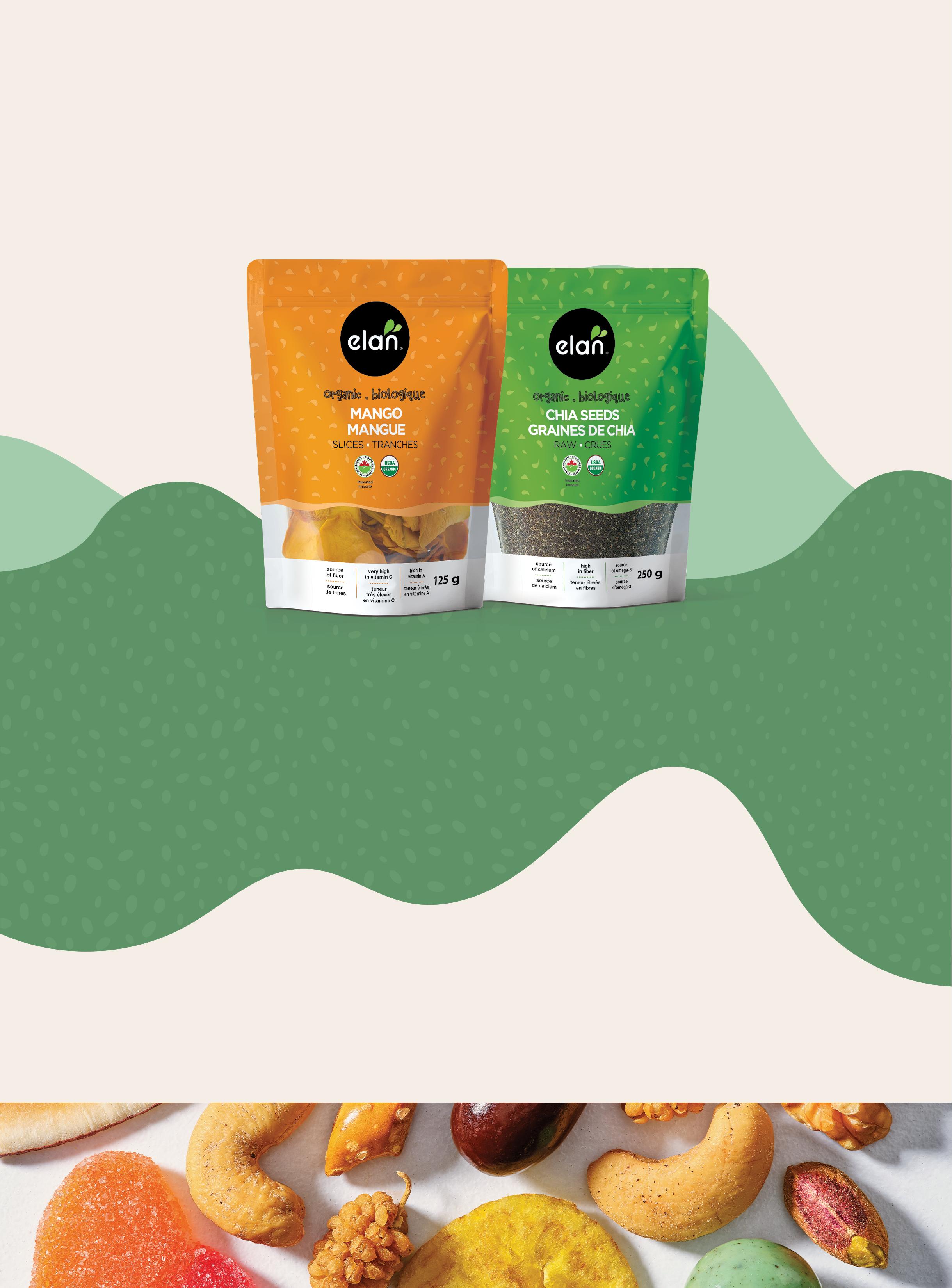
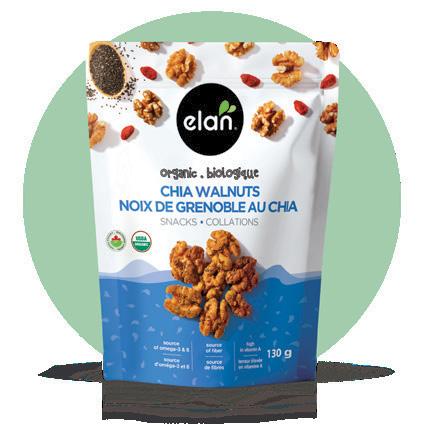




From nostalgic treats to better-for-you options, packaged bakery trends are offering fresh ways for grocers to drive sales
By Matt Semansky
WITH MYRIAD OPTIONS to suit every kind of eating occasion, from breakfast through dinner and all the snacks in between (and before, and after), the bakery section is one of the true anchors of any grocery store. It’s where consumers can find familiar comfort foods or feed an adventuresome palate. The home of sweet indulgences, sandwich staples and creative ingredient combinations.
For grocers, it pays to offer such a wide variety of packaged baked goods, because in these times of financial belt-tightening, Canadians want more from these products than ever.
“Consumers want everything to do double-duty,” says Jo-Ann McArthur, president at Nourish Food Marketing in Toronto. “Satiate me, comfort me, provide some nutrition for me—and then it’s worth the money.”
If sales figures are any indication, Canadians appear to be finding the value they’re seeking. The Government of Canada reports $11.2 billion in retail sales of baked goods in 2023, making it the second-largest packaged food segment in the country.
These statistics suggest a rosy forecast for packaged baked goods, which are primed to remain a staple of Canadian diets. Still, underneath this steady performance lies a category that is changing rapidly. When it comes to the specific food items consumers are choosing from the bakery section,
large-format, heavily processed products are giving way to functional ingredients, artisanal craftiness and smaller versions of nostalgia-tinged desserts.
What’s more, Canada’s shifting demographics are also having an impact.
“Cultural diversity and ethnic offerings are adding excitement, with more naan, roti and global-style flatbreads showing up on shelves than ever before,” says Maryna Shcherbyna, senior marketing manager at Bimbo Canada, a company whose brand portfolio includes Dempster’s, Villagio and Stonemill breads, as well as sweet treats from Vachon and Hostess.
Matt Dill, director of category management—fresh at Ontario grocery chain Farm Boy, says today’s shoppers aren’t just picking up baked goods, “they want a meaningful experience.”
What makes an experience with baked goods meaningful? The following trends provide a few key clues:
Recent years have seen an increasing emphasis on functional ingredients across most food categories, and baked goods are no exception. Health-conscious consumers want their bread—and even their sweet treats and desserts—to do more than fill them up. They’re looking for everything from a protein boost to a fibre infusion to prebiotics.
As research firm Innova Market Insights reports, “consumers are prioritizing preventative health measures, further driving demand for products that support well-being.” One of the top health-related trends, as it is in many other categories, concerns protein. According to Innova, one in five global consumers cite baked goods as their preferred protein source.
It follows naturally, then, that retailers and manufacturers have been adding more protein power to the bakery section. Unbun, for instance, offers bread boasting more than 20 grams of protein per two-slice serving, while Country Harvest’s Whole Grain & Protein Blend bread delivers 13 grams for the same portion.
“The protein trend has always been there, but an aging population has taken it to another level,” says McArthur.
The focus on protein has created opportunities for purveyors of plantbased bakery items. Innova’s research indicates that worldwide there was a 71% increase in baked good product launches
featuring fava bean protein between 2023 and 2024, and a 31% increase in new products with pea protein.
“Consumers want bread that works harder for them,” says Shcherbyna. “Category growth is fuelled by health-driven and artisanal offerings featuring high fibre, protein, ancient grains, gut-health benefits, sourdough and sensory appeal through seeded crusts.”
For many consumers, what’s not in a baked item is as important as what is. Brenda Fontes is director of sales and marketing for O’Doughs, a Toronto-based bakery that specializes in gluten-free bread products. Though she acknowledges the company’s primary customer has historically been a person with celiac disease or other dietary restrictions, she has seen increased interest from those outside of this profile.
“We’re seeing strong interest from flexitarians and curious shoppers—people reducing their intake of gluten or dairy without fully eliminating them,” says Fontes. She adds that consumers are seeking bread and bagels that are gluten free, vegan and made with clean, recognizable ingredients that don’t compromise on taste or texture.
“Digestive wellness, gut health and allergen-conscious choices are major drivers,” says Fontes, “especially as more people follow gluten-free or plant-based lifestyles either by need or preference.”
Gut health is also a key perceived benefit of sourdough, which explains why this distinctive-tasting formulation has taken off in the years since the pandemic—when everyone and their uncle tried their hand at making a loaf. According to Innova, sourdough bakery product launches grew by 21% annually from 2020 to 2024, and extended from bread loaves into pizza crusts, pasta, crackers and chocolate.
Sourdough taps into another notable trend taking shape in the bakery department: the authenticity and premium taste of artisanal products. Nourish Food Marketing’s McArthur suggests an explanation for this could be the enduring hybridization of many work environments.
“We’re still seeing people eating at home for lunch more, and sandwiches still rule for lunch,” McArthur says. “If I’m eating at home, I’m probably going to want
a more premium experience.”
Dill says Farm Boy’s in-house bakery offers consumers the kind of small-batch, made-from-scratch products that meet this demand.
“While many embraced home baking during lockdowns, the return to busier lifestyles has increased demand for convenient, high-quality alternatives.
“We’ve responded by expanding our scratch-made bakery selection,” Dill says, noting the retailer’s private-label offerings such as Chelsea Buns, Triple Fudge Buttercream Brownies and Farm House Loaf have proven popular.
Shcherbyna says millennials and gen-Z consumers are driving the trend toward artisanal breads, pointing out that Bimbo’s Bakehouse lineup features several such items—among them is a range of smallbatch loaves made with seeds and crispy grains to add taste and texture.
Different factors are driving trends at the other end of the spectrum. At the same time they are prioritizing health and hand-crafted quality, consumers are as enthusiastic as ever about enjoying a sweet indulgent treat.
“Consumers are more willing to give up bread than desserts,” says Martin Hall, merchandising director for Metro Ontario. “Demand for sweet baked goods like cakes remains strong, reflecting a desire for comfort and indulgence.”
This doesn’t mean health is entirely off the radar—consumers are reaching for smaller versions of indulgent treats. “Another key trend is the rise in single-serve bakery items,” says Dill.
Joey Bernaudo, vice-president, merchandising at Longo’s, echoes this observation. “The trends in packed bakery items we’re currently seeing at Longo’s include personal-size indulgences as well as items with globally inspired flavours.”
According to McArthur, the popularity of indulgent baked goods—even at a reduced size—speaks to both the nostalgia of older generations and a social media-aided ersatz version of it that exists among younger consumers. “We’re seeing a lot of ‘faux-stalgia’ from younger generations,” she explains. “It’s that whole idea that in crazy times we want something comforting.”
It’s important to note, nostalgia means different things to different people within
Canada’s cultural mosaic. Where a Hostess Twinkie or Jos Louis might call to mind warm memories for many Canadians, others find the taste of home in globally inspired offerings.
Hall says Metro has become more focused on “ethnic and culturally familiar brands that resonate with diverse
communities,” while Bernaudo highlights how Longo’s sources many of its indulgent bakery products directly from Europe and local ethnic bakeries.
“In terms of flavours, pistachio and mango have become quite popular in the last year and continue to be a highlight in the category, from cakes to croissants,”
A handful of factors are in play when it comes to leveraging bakery trends in-store. One of crucial importance is the grab-and-go section, where consumers may be tempted by an especially appealing sweet or savoury treat. Matt Dill from Farm Boy says the grocer strives to create a market-style vibe in its bakery section, which
includes single-serve desserts such as Harry & Heels California Donuts. Connecting products with complementary items can also amplify the performance of packaged bakery goods. “Cross-merchandising with Farm Boy beverages and chef-prepared meals reinforces the bakery’s role in full-meal inspiration,” says Dill.
Martin Hall of Metro agrees, pointing to the strategic placement of burger and hot dog buns near the meat department to encourage shopping for a complete meal occasion.
Bernaudo says.
These flavour trends, combined with an ongoing downsizing of sweet bakery products, speaks to the balance of health and indulgence that is driving Canadians.
As McArthur puts it, it’s all about having “more moments of happiness without the guilt.”
pantry essential
NUTRITION: Gluten-free, nutrient-rich complex carb
Nourish Food Marketing’s Jo-Ann McArthur says all of this is critical, and adds that seasonal promotions and limited-time offers are also a great way to boost sales. In addition, she cites a trend she has witnessed that may offer new merchandising ideas.
“I’m seeing dessert and breakfast charcuterie boards. Consumers will buy a bunch of different things—croissants, danishes, fruit and things like that—and put them all out. That could be interesting to pursue from a merchandising angle.”

Ensure your shelves reflect what today’s shoppers are looking for. Find U.S. rice suppliers to Canada at riceinfo.com/trade.



From specific textures to healthy alternatives, shoppers are craving more from snack foods
By Matt Semansky
Snacking i S one of Canada’s national pastimes, with almost all of us enjoying a nosh between meals. Research platform Statista reports the snack food market in Canada will generate $12.7 billion in revenue in 2025—and it’s expected to grow by nearly 6% annually through 2030.
For most Canadians, snacking is more than a guilty pleasure. Joel Gregoire, associate director, food and drink for Mintel, refers to his company’s 2024 consumer survey on snacking behaviour, which found more than 60% of respondents reported snacking every day, 10% snacked three or four times daily, and only 4% said they snacked less than once a week.
“There are very few people who don’t snack every day,” says Gregoire, who adds that generation Z is the most snackhappy demographic. “People who snack two or three times a day or more also tend to be remote workers, which makes sense—if you have access to your kitchen, it’s easier to go get a snack.”
As for what Canadian snackers reach for, consumers want more than just satiation. From health to ethical considerations to the sensation that accompanies each bite, here are the key trends driving the snack category:
Consumers nowadays know more about how diet impacts their health, and they are applying that knowledge to their snack choices.
“We’re definitely seeing trends towards healthier options,” says Boyd Waddell, grocery category manager for Calgary Co-op. “People are looking for snacks with healthy ingredients, like high protein and fibre, and low sodium and sugar options.” Waddell says young adults are leading the charge in demanding healthy ingredients—and inspiring food manufacturers to respond.
That’s where companies such as Chiwis come in. Founded by Sarah Goodman, the B.C.-based company produces chips made from dried fruits such as kiwis, apples and pineapples. The company launched two SKUs at Whole Foods Market in British Columbia in 2021 and has since added six more products to its portfolio and established a solid footprint in the western region of North America.
Goodman says the rapid growth of her company demonstrates how once-niche healthy eating trends have gone mainstream. “When I started, I thought this was going to be a health-oriented snack that would only do well in a Whole Foods or a place like that.”
Instead, it turns out that a much broader audience is looking for what Chiwis offers. The same goes for manufacturers such as
Purplesful Snacking, which produces popcorn made from purple corn that, according to co-founders Matthew and Jasmin von Teichman, features high fibre, antioxidants and amino acids. And Peacasa, a London, Ont.-based maker of chickpea-based chips containing five to eight grams of plant protein per serving.
Many consumers are snacking through an ethical lens, prioritizing local producers.
“The big factor right now is a strong focus on Made in Canada products,” says Calgary Co-op’s Waddell.
That’s great news for companies such as Three Farmers Foods, which produces bean, chickpea and lentil-based snacks and was co-founded in 2011 by Elysia Vandenhurk alongside Saskatoon-area farmers and family members. “Our whole vision was to add value direct from the Prairies of Canada and take it out to the Canadian consumer with nutritious and tasty snacks,” says Vandenhurk, who also serves as chief innovation officer.
Another example is Made With Local. This Nova Scotia-based snack food company sources ingredients from local Canadian farmers and food producers, including organic oats, honey and blueberries, for its soft-baked bars and cookies. Made With Local products are also high in fibre and protein.
For Canadians, the ideal snack is something you can hear and feel. Which is to say, crunchy snacks are ascendant. Whole Foods even identified crunch as one of its top 10 food trends to watch in 2025.
“In terms of texture, crunchy dominates salty snacks and items like snack bars,” says Mintel’s Gregoire.
Three Farmers is more than happy to provide the sound and fury. According to Vandenhurk, the company’s own research confirms the importance of the crunch factor in its products, which come in flavours such as dill pickle, barbecue and sea salt.
“When we asked what [consumers] were looking for in a snack, the top five things that always came to light were: homegrown, Canadian, high-protein, high-fibre and crunch,” says Vandenhurk. “Crunch was a very specific thing that always ranked in the top five, and that is really playing in our favour.”

The most valuable recognition of all comes from consumers. We are deeply grateful to all Canadians for supporting us for over 50 years.
- Penny Chapman, President of Chapman’s

Chapman’sIceCreamhastoppedthechartsasCanada’sMostValuedBrandin astudyperformedbyTorontoMetropolitanUniversity(TMU)whichsurveyed 2,000+Canadiansonseventraitstheyvaluemost.

1 OATY BITES
Love Child Organics’ Oaty Bites are soft-baked, vegan granola bites made with gluten-free oats, sunflower seed butter, quinoa and chia. With only five grams of sugar and between 12 to 14 grams of whole grains per serving, they’re ideal for lunchboxes and on-the-go snacking. Flavours include Strawberry & Kale, Blueberry & Carrot, and Chocolate & Banana.
2 MONTANA’S READY-TO-EAT MEALS
Restaurant chain Montana’s has entered the ready-to-eat category with four Canadian-made products now available at grocery stores: Chipotle Honey Ribs, Swiss Cheese & Onion Burgers, Pulled Pork in Texas Bold BBQ Sauce, and Chicken & Vegetables in Spicy Salsa.
3 SUMM! SPICY SRIRACHA CHICKEN SPRING ROLLS
Spicy, globally inspired, snackable foods are experiencing a surge in popularity. Fine Choice Foods is responding to the trend with a new refrigerated appetizer: Spicy Sriracha Chicken Spring Rolls— tender chicken and vegetables in a crispy shell, paired with a sweet sriracha dipping sauce.
4 FANTA STRAWBERRY
Offering a balanced blend of sweet and tart, Fanta Strawberry joins the brand’s existing lineup of fruit-flavoured carbonated soft drinks that includes Orange and Pineapple. Produced and distributed nationwide in partnership with Coke Canada Bottling, this beverage is available in a range of sizes.
5 BOLTHOUSE FRESH ORGANIC SIDE DISH SIZZLERS
Tapping into the rising demand for convenient cooking options, Bolthouse Fresh has launched Organic Side Dish Sizzlers—a blend of sliced organic rainbow carrots paired with chef-inspired sauces in three flavours: Sweet Teriyaki & Ginger, Greek Vinaigrette, and Sweet & Smoky. CG
1 2




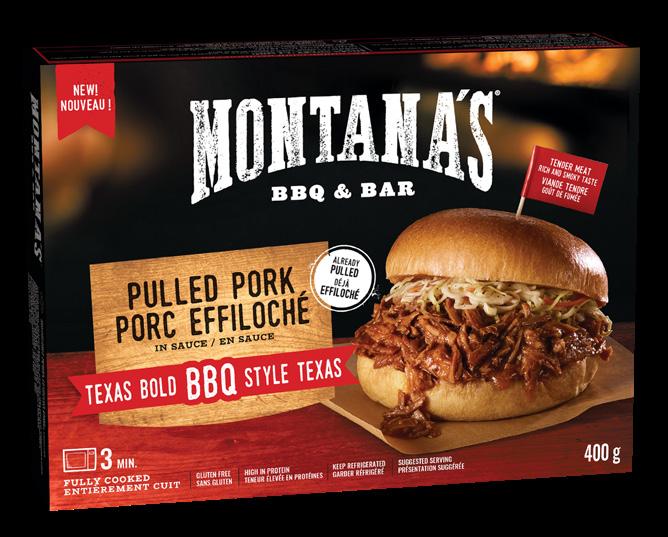
3

5

4

By Kristin Laird
WITH INTENSIFYING ENVIRONMEN
tal issues, such as climate change, resource depletion, biodiversity loss and plastic pollution, there hasn’t been a more pressing time to concentrate on sustainability. The grocery and CPG industries are well-positioned to influence consumers and collaborate with policymakers and fellow retailers, too.
Wesley Gee is the chief sustainability officer at Works Design, a Toronto-based communications and advisory firm that supports clients across North America. His role is to help companies define meaningful sustainability priorities, rather than, as he puts it, “just ticking the boxes.” Here, Gee shares the importance of taking meaningful action and how retailers can work together to drive industry-wide change. This interview has been edited for clarity and length.
What are the most pressing sustainability challenges facing grocers and CPGs?
There’s a few. One is around climate— climate isn’t just about reducing your footprint and reducing your GHGs [greenhouse gas emissions], it’s understanding how climate is going to impact your wider supply chain. It might impact your access to different materials, for instance. It also relates to companies doing their part to reduce their broader environmental footprint. So, obviously, packaging and manufacturing and distribution all fit into that space. Another issue is supply chain accountability and because of Bill S-211 [a Canadian act focused on increasing transparency and

reducing the risk of forced labour and child labour in supply chains], there’s a greater kind of responsibility, a wake-up call for companies to make sure their suppliers have responsible labour practices. And the last thing is transparency, or what I colloquially call “truth.” There is an opportunity for companies to do a better job earning trust by being transparent about their businesses and about the attributes of their products, and maybe doing it from an education standpoint rather than just providing information because they need to.
What’s a good first step beyond simply checking a box?
The first thing is what I call “getting your house in order.” Focus on having good policies in place and identifying the purpose and the vision of your organization. And not only having those [policies in place] but understanding what it means to live them—to show you are a purpose-driven company with a sense of what you want to be in the long-term and how you plan to get there. That’s going to resonate with people. It doesn’t need to be super specific, but understand why you exist as a company. And what values do you need in place to ensure your culture is driven towards meeting those goals? What systems do you have in place to make sure there’s a level of accountability? I think that’s a good start. Doing a materiality assessment [a process used by organizations to identify and prioritize the most important environmental, social and governance (ESG) issues for
their business and stakeholders] is an opportunity to connect with others and it’s often a missed opportunity.
In what ways can grocers engage with policymakers to shape practical sustainability policies?
It’s important they pursue things in a collective fashion, perhaps through an industry association, rather than Sobeys pushing for something, Loblaw pushing for something different and Metro going in a third direction. If they’re able to show they can work together on some non-competitive issues, that’s where policymakers are going to listen. It would be massive to show grocery retailers can work together on certain areas.
From a consumer perspective, what are the expectations around sustainability?
I think the bar is quite low. Ultimately, consumers want safe, high-quality products that are reasonably healthy and tied to responsible labour and environmental practices. We see research every year from organizations like GlobeScan that look at which companies stand out from a reputation standpoint on sustainability. I can’t say how that leads to purchasing decisions because I think when people fill out surveys, they are a bit idealistic of what they do versus the decisions they make. But, there is an opportunity for companies with a purpose to engage with their audiences. So, thinking about [sustainability] as an opportunity to differentiate themselves and better connect to Canadians CG

